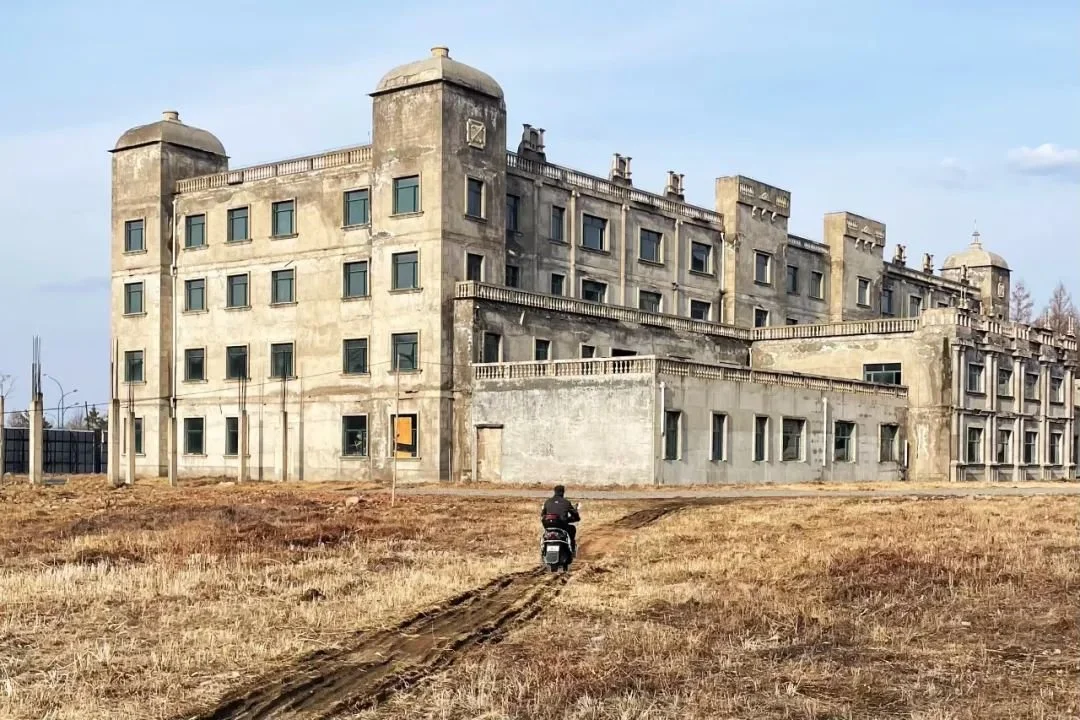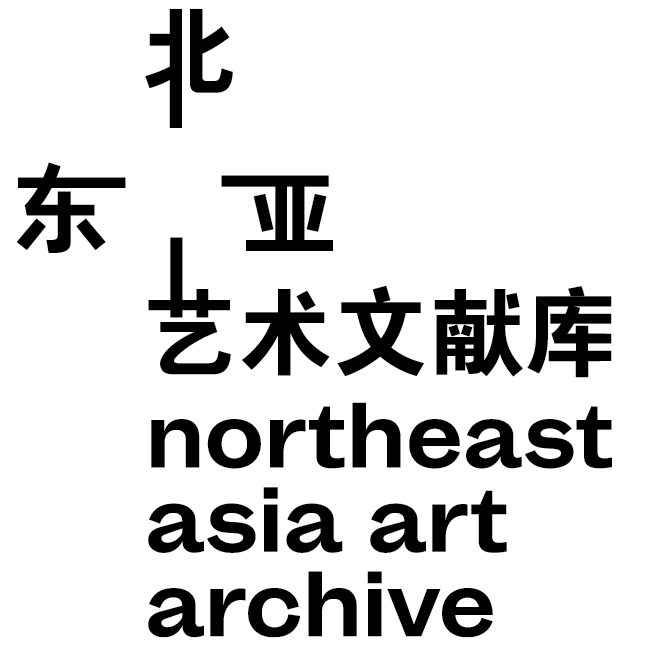Heavenly Lake, Changbai Mountain, satellite image, July 9, 2019. © Google Earth + Maxar Technologies
A Research Residency Project
Northeast Asia Art Archive
Yanbian, Jiling Province, China
5.6-16, 2025
There is the twofold movement of decoding or deterritorializing ]lows on the one hand, and their violent and arti]icial reterritorialization on the other.
Gilles Deleuze and Félix Guattari,
Anti-Oedipus[*]
——————————-
[*] Gilles Deleuze and Félix Guattari, Capitalisme et schizophrénie l'anti-œdipe (Les Editions de Minuit, 1972). Anti-Oedipus: Capitalism and Schizophrenia (University of Minnesota Press, 1983), translated by Robert Hurley and Mark Seem.
Changbai Mountain stands at the junction of China's three northeastern provinces (Jilin, Liaoning and Heilongjiang) and the Ryanggang province in North Korea. Called Paektu Mountain in North Korea, it is like a white giant overlooking the vast territory of Northeast Asia. From the perspective of satellite imaging, Heaven Lake, which was formed by a volcanic eruption in the Quaternary about 2.6 million years ago, is like a deep dark eye, sending out "heavenly questions" to the creator. Over the long stretch of geological time, human beings hunted and gathered with the support of mountains, sowed and plowed fertile soil formed by volcanic ash, were nomadic over grasslands, filled their bellies with fish from rivers and the sea, and thrived on this land from generation to generation. They constructed their lives according to nature, creating customs and cultures through reliance on local conditions. Then, these people condensed into nations and states in order to claim land rights and political power and launched wars for the resources as well as the conquest of culture. These countless events were recorded to form a "history," and this enculturation of history, coupled with long-term cultural immersion, has strengthened awareness of this land as its people's own living territory, making it a unique human idiographic and geographical unit, a process of territorialization.
Approaching human history from distant geological time, but also from recent times, territorialization can be seen as a continuous and repeated process. When Gilles Deleuze and Felix Guattari put forward the concepts of deterritorialization and reterritorialization for the first time in their philosophical work Anti-Oedipus, they were criticizing late capitalism. Deterritorialization and reterritorialization can then be understood to be an almost simultaneous displacement of historical territorialization, driving the operation of the capitalist desire machine and leading to schizophrenia. These two concepts were later applied, in historical anthropology, to the study of diasporic cultural adaptation. To adapt to local living conditions, immigrants will gradually give up the older familiar languages, customs, cultures and social relations, and acquire new ones. With the extension of settlement time, they will also produce new regional identities. This is the simultaneous process of deterritorialization and reterritorialization.[1] However, with the rise of multiculturalism, these two concepts can face complex challenges when explaining diasporic phenomena.
Territorialization was developed as a concept in political geography to define national territory and Lebensraum.[2] After Deleuze and Guattari first used the terms deterritorialization and reterritorialization, geographers continued to use them to construct a theory of regionalism. Especially after the practice of urban renewal arose, the concepts of deterritorialization and reterritorialization became powerful academic tools to analyze the redistribution of social resources by state power, and the dismantling and reorganization of social relations by real estate capital.[3] The Changbai Spring research residency program, de/re-territorialization, attempts to grapple with how to break through stereotypes of Northeast China and even Northeast Asia from the perspective of culture and art, and discuss concepts of cultural nativity and locality, of this geographical region against the background of a globalization that has led to increased mobility and a double compression of time and space––to construct a new cultural subjectivity and regional identity.
The earliest geographical mapping of Changbai Mountain took place in 1709. Jesuit missionaries Jean Baptiste Regis, Pierre Jartoux and Xavier Fridelli, appointed by the Kangxi Emperor, were the first Europeans to set foot on Changbai Mountain.[4] Their latitudinal and longitudinal maps were included in the woodcut Kangxi Imperial Atlas of China in 1717, which can be said to be the Qing empire's own record of territorialization. Changbai Mountain stretches for more than 8,000 square kilometers, with the main vein shared by Jilin Province and Ryanggang Province, the remaining veins continuing on to Liaoning Province, Heilongjiang Province and the Korean peninsula. It is the birthplace of the Songhua River, the Yalu River and the Tumen River. Its nourishing culture has also flowed from the core area to Liaoning and Heilongjiang, the Korean peninsula, eastern Inner Mongolia and even to the far east of Russia, forming a ripple-like circle. It is not only a landmark of Northeast Asia, but also a sample of the cultural ecology of the region.
Northeast Asia, as the birthplace of both the (Mongol) Yuan empire that conquered Eurasia and the Qing regime that entered the Central Plains, as well as where Japan developed the colony of Manchukuo, has always been of concern to historians. The territories of China, Korea, Japan, Russia, and Mongolia are also regarded as important points from which to observe geopolitical activity. However, academic research has long focused on the political and economic dimensions of Northeast Asia, and little attention has been paid to the interactive practices of its ecologies, cultures, arts, and multiple ethnic communities. The Changbai Spring project is intended to fill this gap. The residency is located in the settlement of historically Korean immigrants in Jilin Province, China. It is also close to the locus of Heaven Lake. The project will focus on field investigations and research, but its attention will cover northeast China and the whole of Northeast Asia. In spring, the invited artists and scholars with Northeast Asian backgrounds and the signed-up research fellows will gather at the banks of Heaven Lake to discuss the big questions: Why am I here? What do I bring to humanity? What has humanity brought me?
[1] Michael Szonyi used these two concepts to analyze the "everyday politics" of military households who were recruited to be stationed in different places when studying the implementation of the military system in China in the Ming Dynasty. See Michael Szonyi, The Art of Being Governed: Everyday Politics in Late Imperial China (Princeton: Princeton University Press, 2017).
[2] German geographer Friedrich Ratzel first put forward the concept of territory in his book Political Geography (1897), and American geographer Thomas Sauer enriched the discussion of territoriality on this basis. See Thomas Sauer, Human Territoriality: Its Theory and History (Cambridge: Cambridge University Press, 1986).
[3] John Harrison, "Networks of Connectivity, Territorial Fragmentation, Uneven Development: The New Politics of City-regionalism," Political Geography, Volume 29, Issue 1, January 2010, Pages 17–27.
[4] Henry Evan Murchison James, The Long White Mountain; Or A Journey in Manchuria: With Some Account of the History, People, Administration and Religion of that Country (London: Longmans, Green, and Co., 1888), Pages 265–266.
Workshop Archive
1. FIELD TRIP
Natural Habitat of Changbai Mountain:
The Memetics of Biodiversity
Led by Zhou Haicheng & Piao Zhengji (Jeongkil Park)
Wednesday, May 7, 2025
9:00–13:00 · Hanconggou Ecological Park & Forest near Heping Ski Resort
Changbai Mountain botanist Zhou Haicheng guided participants through the mixed coniferous-broadleaf forest, identifying native plant species and explaining the inner workings of a biodiverse forest ecosystem. He spoke about the ecological ties between this landscape and the everyday lives of local people. Changbai Mountain provides water, minerals, timber, ginseng, medicinal herbs, animals, and food — it is a source of both sustenance and spirituality. But the over-extraction of these resources risks pushing the mountain toward desolation and exhaustion. Even though common environmentalist appeals such as “for future generations” still carry anthropocentric undertones, the strict enforcement of conservation zones around Changbai reflects a growing reckoning with the consequences of unchecked economic development.
Wildlife expert Piao Zhengji demonstrated his methods for working in the field — summoning animals with custom-made whistles, tracking species through footprints and scat, installing infrared cameras to monitor movement, and even recounting a close encounter with a bear. Beyond the histories of hunting and domestication, he emphasized how human proximity alters wild animal behavior, with urbanization, tourism, and infrastructure projects posing major threats to their survival. Anthropologist Anna Lowenhaupt Tsing writes in The Mushroom at the End of the World that those attuned to ecological crisis must learn from matsutake mushrooms, which stubbornly thrive in human-disturbed forests. In an era when the monster of “development” seems unstoppable, perhaps the way forward is not mastery over nature, but a renewed sense of kinship with it.
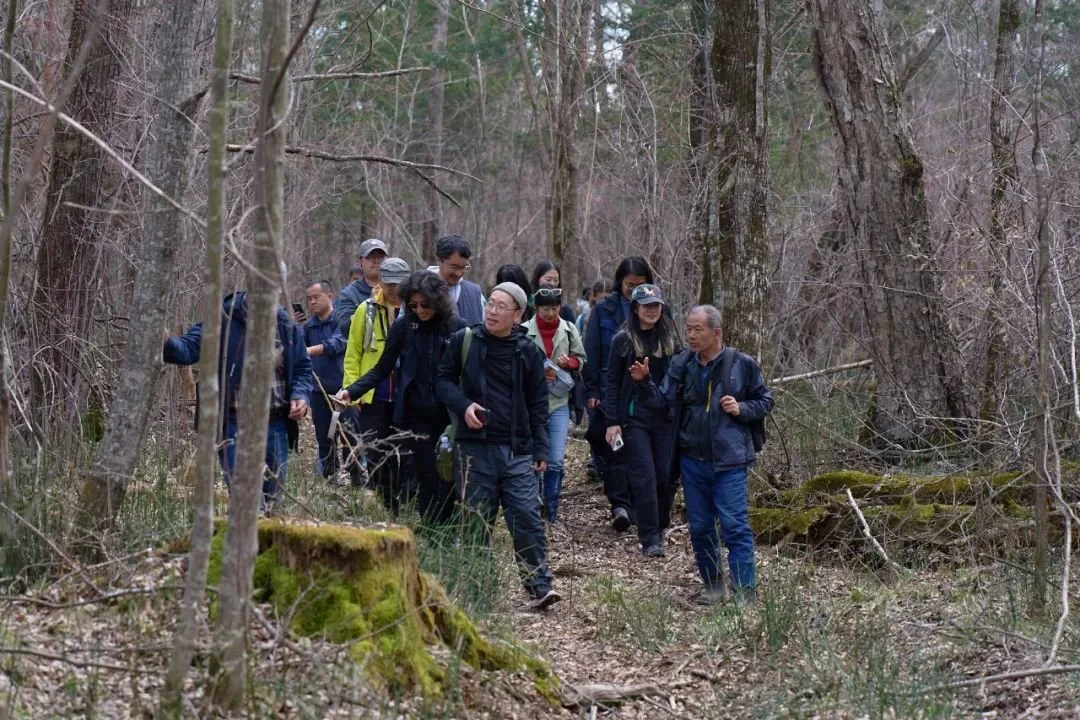

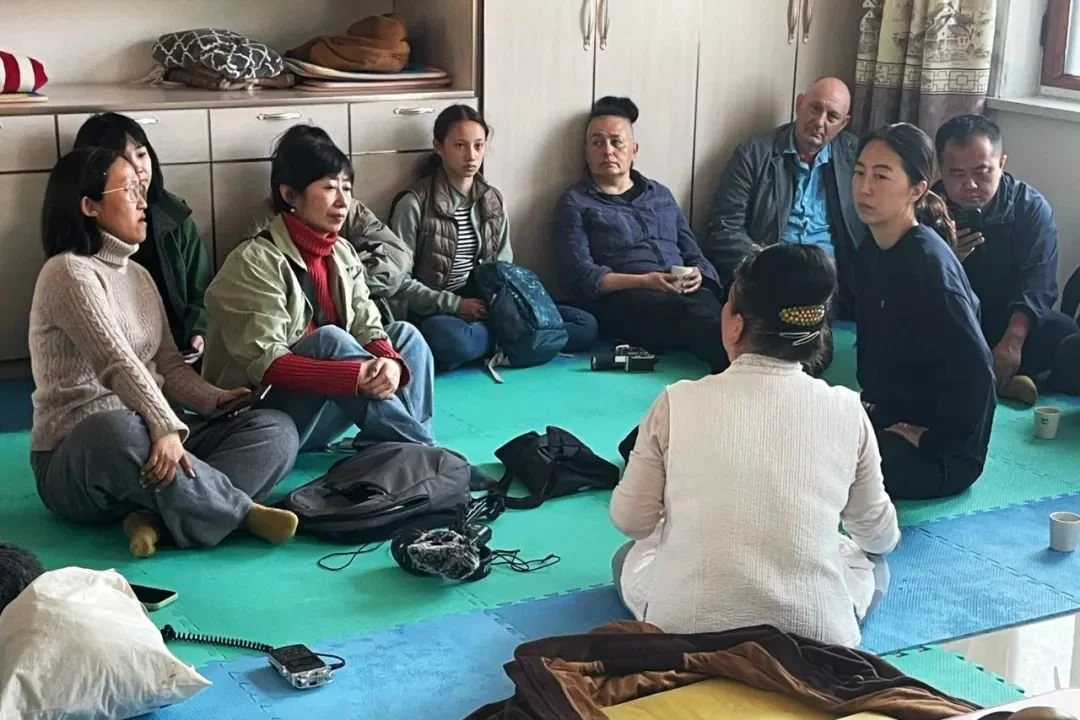
2. FIELD TRIP
Village Voice: A Listening Practice
Wednesday, May 7, 2025
15:00–17:00 · Yonghong Village, Antu County
In Yonghong Village, we visited a cave temple that honors Buddhist, Daoist, and local shamanic deities. We strolled along the Second Songhua River, which flows past the village, visited Korean Chinese households, and conducted field recordings and listening exercises to distinguish between human and natural sound sources. When Korean curator Haeju Kim from the Singapore Art Museum began speaking Korean directly with a local Korean Chinese Buddhist, the historical and national boundaries between them instantly dissolved through their shared language.
3. SCREENING
Mia Yu
Eme Cosmos , 2024, 4K video (color, stereo sound), 23' 00'
Amber , 2024, 4K video (color, stereo sound), 9' 00'
Wednesday, May 7, 2025
19:00–21:00 · Northeast Asia Art Archive, Erdaobaihe
These are two short video works filmed by Mia Yu in Fushun in 2024. Eme Cosmos uses smooth drone footage to break through the limitations of the human gaze. The flying camera offers an aerial view reminiscent of the Manchu earth goddess Eme, a mythic ancestral figure of the Changbai Mountain region, as she surveys the land from within the clouds. In her poetic voice, she speaks of the desolation that follows the depletion of energy and the pain inflicted by infrastructural intrusions. This is both Eme's lament against anthropocentrism and Yu's lyrical tribute to her northeastern homeland—a cosmic narrative imbued with deep regional sentiment. Unlike the restraint often demanded of male artists, Yu, invoking the name of Eme, allows emotion to flow freely and without reserve. Amber, in contrast, is composed of mostly static, grounded shots. In the warmth of a fire and idle conversation, the topic of amber leads to reflections on the vast, distant geological time that predates the emergence of humankind.

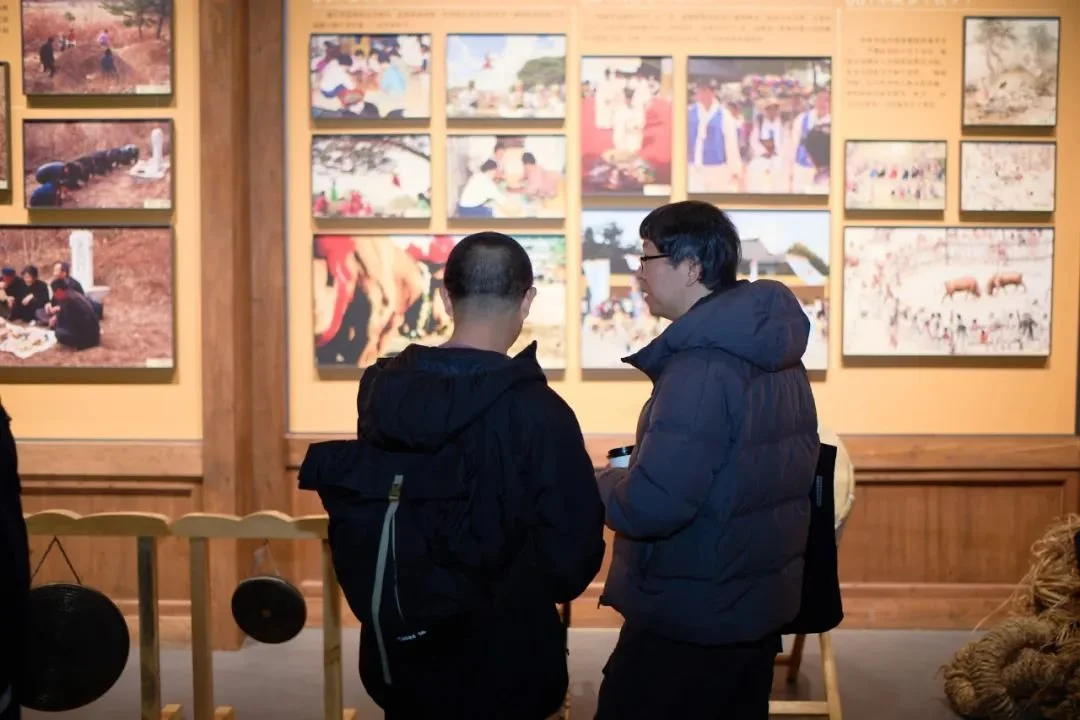
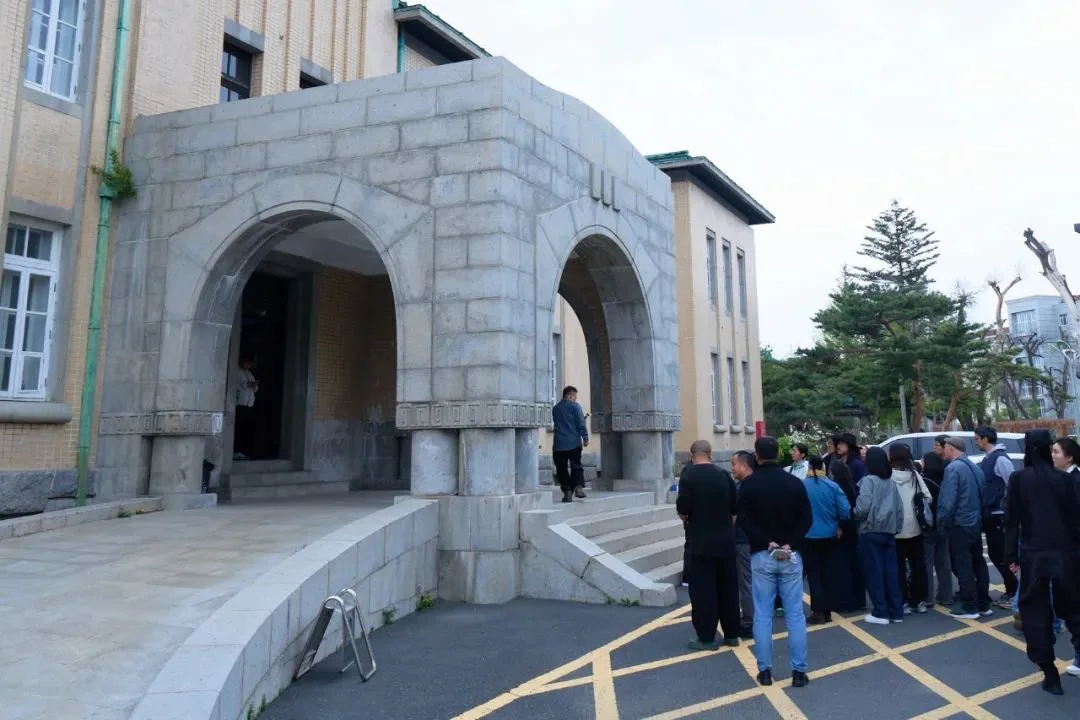
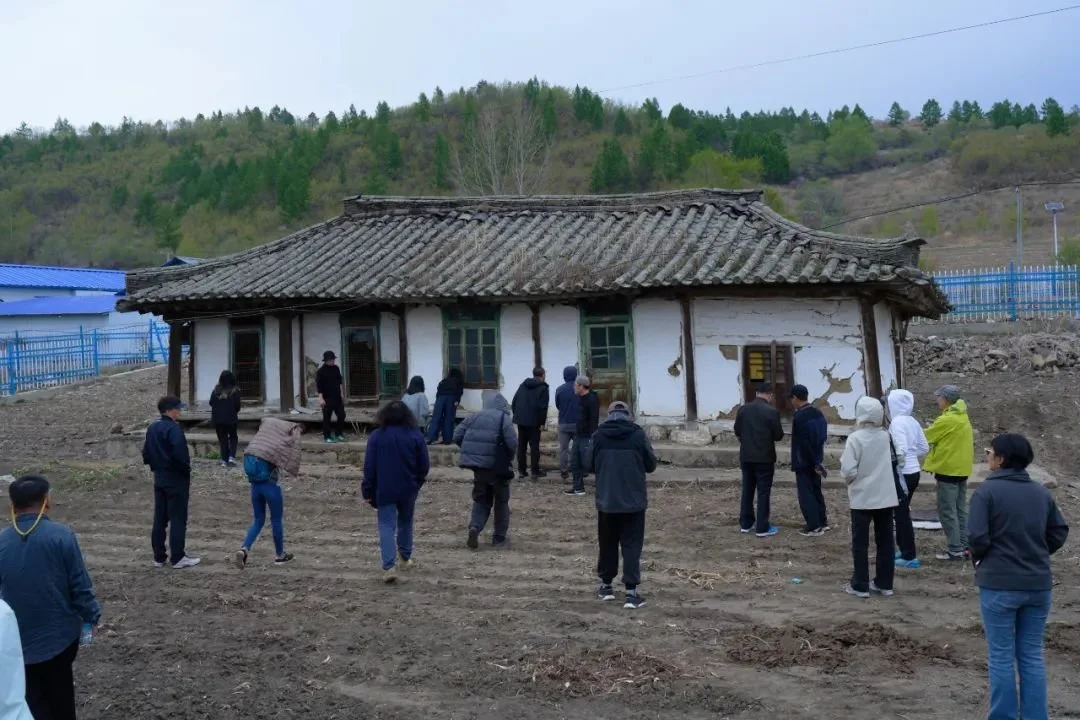
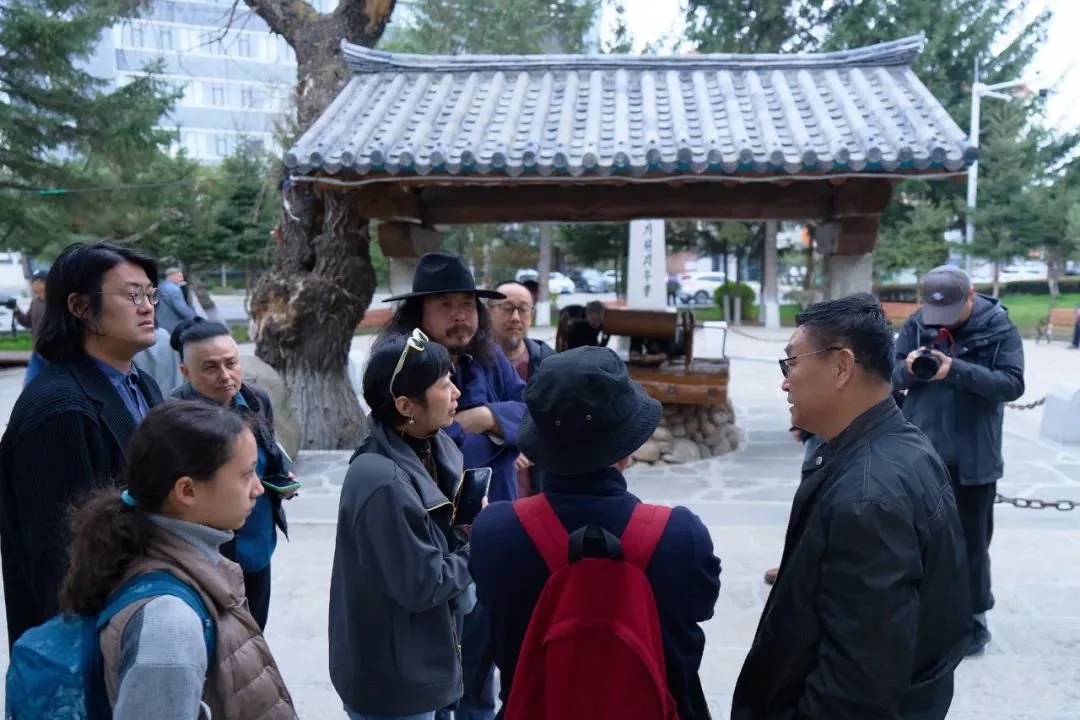

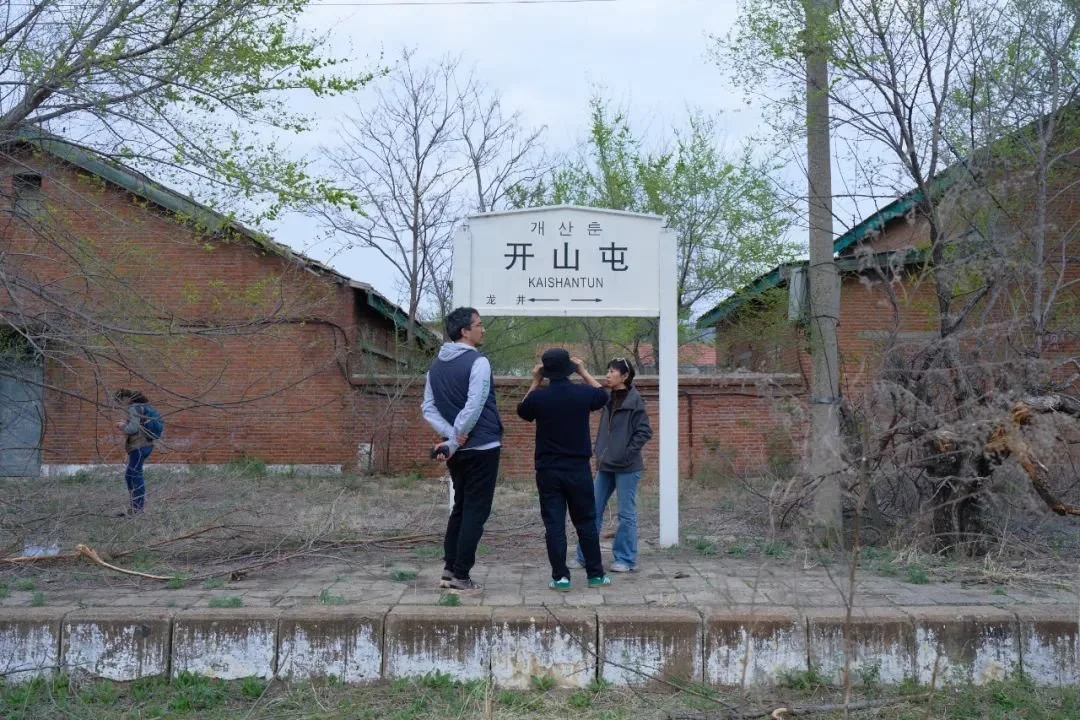
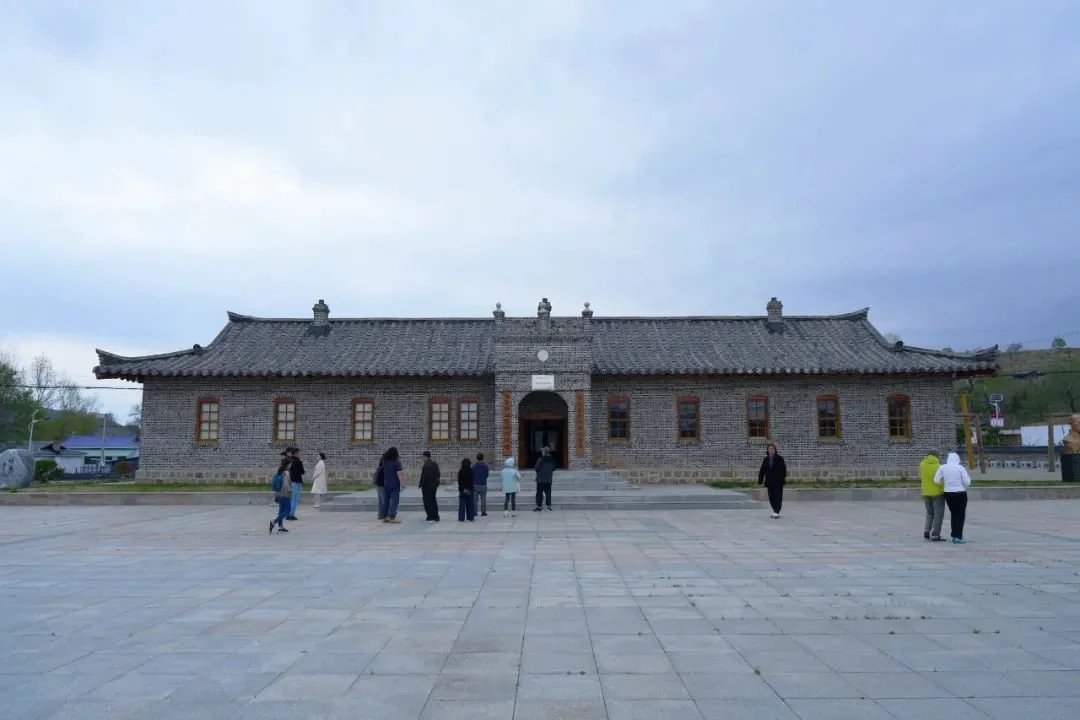
4. FIELD TRIP
Past and Present of Gando: Diasporization and Identification
Thursday, May 8, 2025
9:00–21:00 · Yanbian Mueum, Former Gando Consulate General of Japan, Former Kangshantun Station, China-North Korea borderline, and the Joseonjok village Longshan
Our field visits in Yanji and Longjing focused on the history, present-day realities, and national identity of Korean Chinese communities in Yanbian, guided by local historian Lü Yingwu. We began at the Yanbian Museum in Yanji, which featured two major exhibitions: Crossing Borders, Crossing Rivers, a clear chronological account of migration from the Korean Peninsula and China proper to the Yanbian region from the Qing dynasty through the Republican period; and Folk Cultures, which presented immersive displays of the region's diverse ethnic traditions.
The origin of the name "Longjing" (Dragon Well) traces back to a well discovered in the late 19th century by Korean settlers who had arrived in the area then known as Liudaogou. They installed a traditional “dragon bucket” pulley system and later renamed the place Longjing, commemorating it with a stone stele in 1934. Today, Longjing has a Korean Chinese population of over 100,000, comprising about 66% of its residents. Most are descendants of Koreans who remained in Yanbian after World War II and identified with the People's Republic of China.
We visited the former Japanese Consulate in Jiandao. “Jiandao” was a term used by the Korean Empire to refer to the region of Korean settler communities within Qing territory along the Tumen River—now roughly corresponding to today's Yanbian Korean Autonomous Prefecture. In 1907, under the pretext of protecting its Korean colonial subjects in Jiandao, the Japanese Empire established a temporary consular office in Longjing. Following the 1909 Sino-Japanese Tumen River Border Agreement (also known as the Jiandao Agreement), this office expanded into a full consulate, which remained active until 1937.
In Changcaitun, a hamlet in Mingdong Village, Zhixin Township, we encountered a well-preserved traditional Korean Chinese “eight-room tile house” with a timber-mud structure, black-tiled xieshan (hip-and-gable) roof, and upward-curving eaves on its ridges—typical of Korean residential architecture. Such homes reflect the spatial codes of Korean domestic life, structured around gender distinctions and generational hierarchy.
We then visited the Mingdong School Memorial Museum, located in the same village. Mingdong was a major base for Korean independence movements in the early 20th century and is also the birthplace of the poet Yun Dong-ju. In 1899, Yun's uncle, Kim Yakyun, relocated from Hoeryong, North Hamgyong Province, to Changcaitun, seeking to build Mingdong into an ideal settlement for Korean migrants. In 1908, he founded the Mingdong School to provide modern education for Korean children. During the March 1st Movement of 1919, the school rallied 20,000 protesters against Japanese rule, and 19 people were killed when Japanese forces opened fire near the Jiandao consulate. Among the school's most famous alumni are Yun Dong-ju and Na Woon-gyu, director of the landmark film Arirang. The museum includes historical documents and features a commemorative statue of Kim Yakyun beside the original building.
At Yuliangtian (“Imperial Rice Fields”) in Xiaquanping, Guangzhao Village, Kaishantun Township, Dragon Well City, we stood before vast fields of rice first cultivated in the 1890s by famine-stricken Koreans who crossed the Tumen River from Chongsong County in North Hamgyong Province. They brought wet-rice agriculture to northeastern China. In 1935, Korean farmer Choi Hak-chul, who had migrated from North Chungcheong Province, introduced oil-paper seedling beds that significantly boosted yields and grain quality. In 1941, the Manchukuo regime rewarded him with more paddies to grow tribute rice for Emperor Puyi's table—thus giving rise to the name “Imperial Rice Fields.” Further north lies Chuankou Village, once separated from Chongsong by a sandbar in the Tumen River. This was the earliest crossing point for Korean settlers and marked the original geographic use of the term “Jiandao,” which later expanded to include the entire Yanbian region.
Finally, we arrived in Kaishantun, a small border town overlooking the Tumen River and directly facing Samsanbong in Chongsong County, North Hamgyong Province. Built in 1923, Kaishantun Station was the eastern terminus of the Chaokai Railway (connecting Chaoyangchuan and Kaishantun), just 150 meters from the border—the closest railway station to North Korea in all of northeastern China. After Kaishantun, the original line crossed the Tumen River to connect with Samseonpo Station in Korea, allowing Japan to transport resources from northeastern China to the Japanese mainland. The station has since been decommissioned, but the original Manchukuo-era fourth-class station house remains. A new station sign installed by the Shenyang Railway Bureau still lists Longjing as the previous stop—but leaves the next station blank.
5. CO-LABORING
Cuoluozi: A Shelter
Friday - Monday, May 9 - 12, 2025
13:00–14:00 · The second-floor terrace of Zhongxiang Building, Erdaobaihe
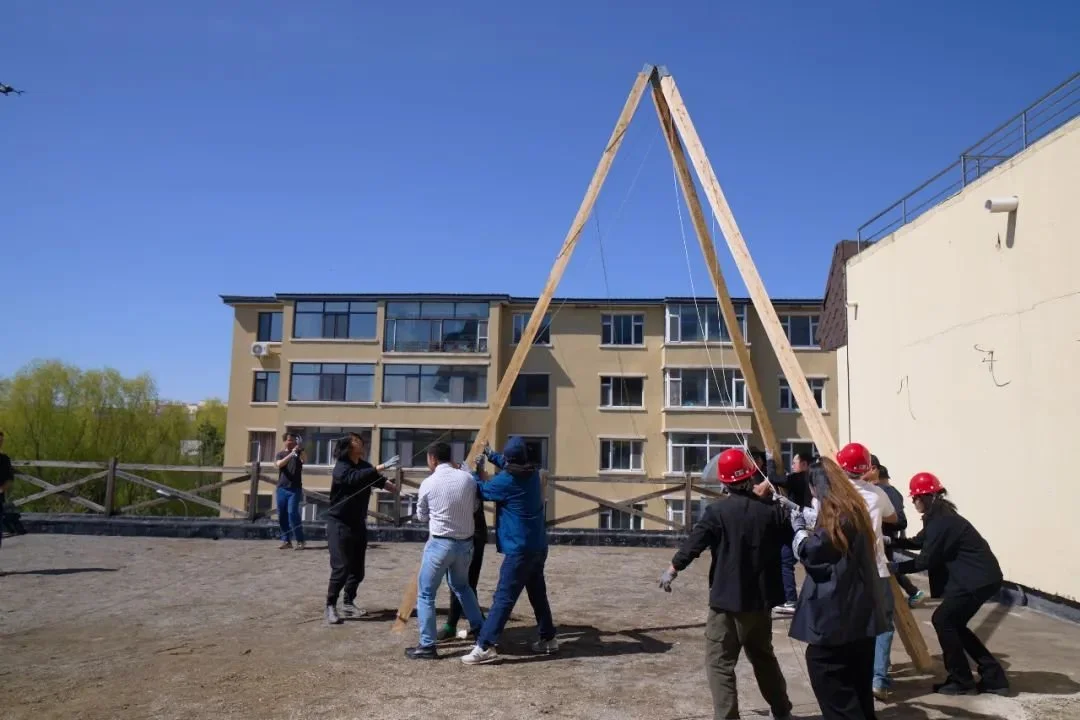
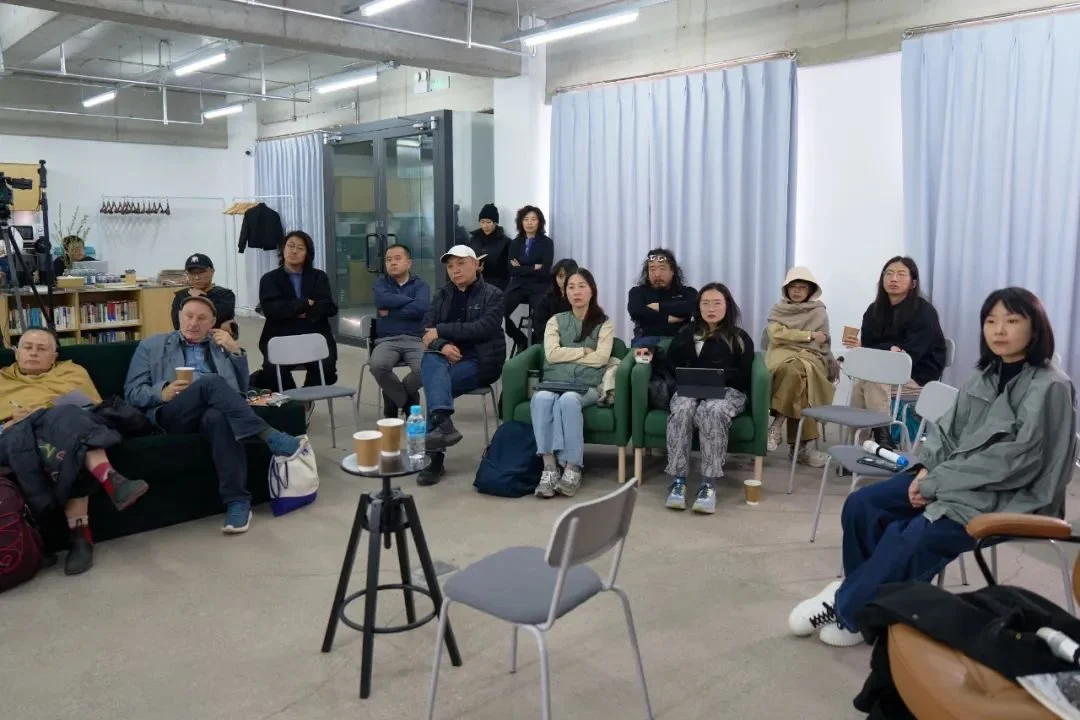
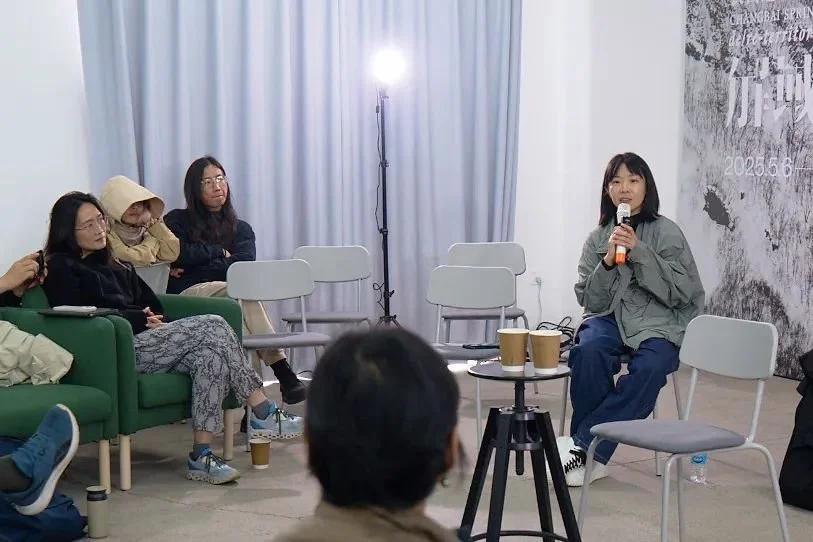
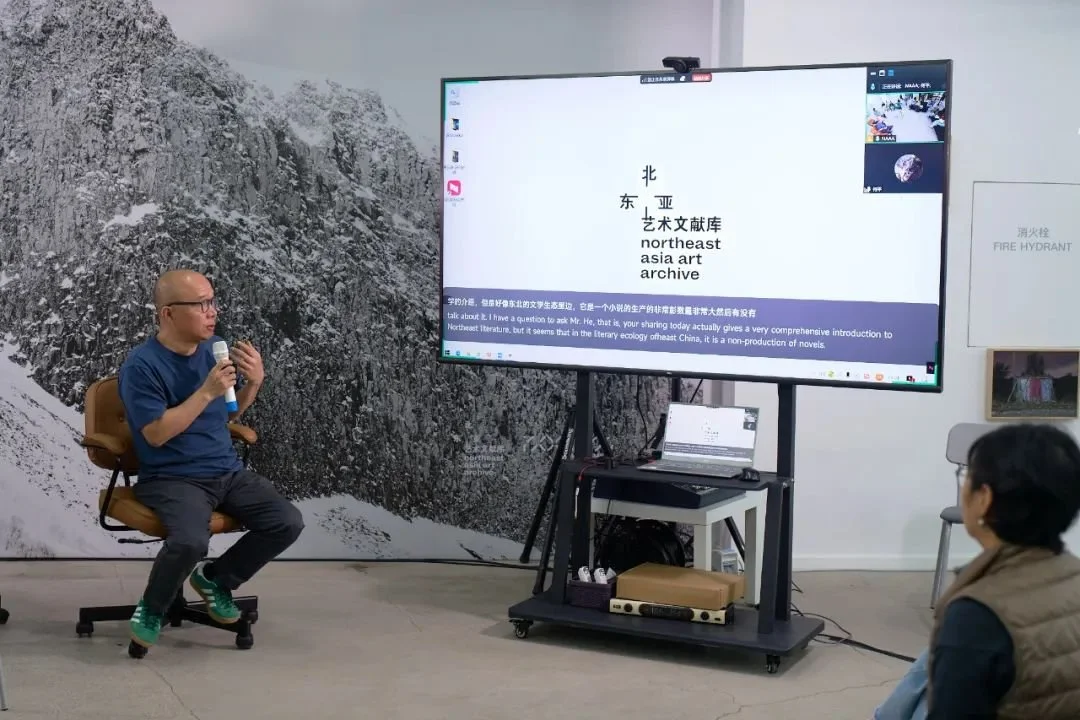
6. SEMINAR
Dongbei Renaissance: New Arts of Storytelling
Panelists: He Ping, Zhihan; Moderator: Ou Ning
Friday, May 9, 2025
9:00-12:00 · Northeast Asia Art Archive, Erdaobaihe
The so-called “Northeast Renaissance” in literature is, in fact, framed in contrast to the “Northeast Writers' Group” of the 1930s. Just as the loss of sovereignty following the Mukden Incident (September 18, 1931) brought national attention to exiled writers like Duanmu Hongliang, Xiao Hong, and Xiao Jun, the wave of layoffs from state-owned factories in the 1990s provided widely resonant subject matter for a new generation of writers such as Shuang Xuetao, Ban Yu, and Zheng Zhi. Joining the conference virtually, literary historian He Ping carefully traced the modern literary history of Northeast China from the Republican era to the present. The writers and works on his timeline formed a dense literary constellation of the region, leaving few gaps. From the perspective of production and dissemination, regional literature that grapples with pain and trauma has, through publication in metropolitan centers and media amplification, broken through geographical limitations to create a national stir—successfully securing the place of two generations of Northeast writers in the canon of modern Chinese literature.
Yang Zhihan is a fiction writer who emerged after the famed “Three Swordsmen of Tiexi” in Shenyang. Her literary universe centers on the city of Qiqihar, where she constructs a narrative world that is bitterly cold, brutal, unyielding, and chilling to the core. In Canned Yellow Peaches, the moment when a sheep bone is spat out nullifies the dead character's desire for redemptive sacrifice—a startling reversal of power by the weak. In Serial Confiscation, a family saga spanning several generations lays bare the psychological terrain of moral collapse and repair. Fishing Alone presses a sensitive and violent nerve amid frozen earth and frigid skies, sending the plot into an unexpected downward spiral. In her presentation, Yang Zhihan shared how her personal writing weaves together reality and fiction. She also revealed some details of the novel she is currently working on.
Ou Ning remarked that due to generational shifts, the younger cohort of writers inevitably approaches regional narratives through a process of deconstructing and reconstructing their relation to place. Yet he noted how many of these writers consciously avoid the regional labels that scholars have attached to them—this tendency to “de-Northeast” their identities reflects the demands of personal career planning. Ironically, just as this was happening, the impact of the “Northeast Renaissance” was beginning to ripple outward into English-language publications such as Granta and The Paris Review, while Northeast Asian topics were gaining traction in academic research. Regardless of literary trends, one writer has never ceased writing about the Northeast: Chi Zijian. Her latest book, Northeast Stories, once again excavates previously untouched aspects of regional history. In addition to fiction, nonfiction writing about the Northeast also merits attention—for example, Michael Meyer's In Manchuria (2015) offers a compelling outsider's perspective from beyond the Sinophone world.
7. PERFORMANCE
Aki Onda, Cassette Memories
Hankil Ryu and Yan Jun, Interface: Traction and Repulsion
Friday, May 9, 2025
14:30-16:00, 19:00-20:00 · Summer Palace, Erdaobaihe
"Cassette Memories" is a sound performance series by Aki Onda that began in 2004. The project primarily uses Walkman cassette players to play curated field recordings, engaging in a site-specific dialogue with the spatial memory of locations such as plazas, hospitals, factories, historic buildings, or streets. Various versions have been presented across Europe and North America. To prepare for the Yanbian iteration, Onda traveled from Japan in early April to conduct a week-long field recording session. He visited water sources, villages, and forest farms in Erdaobaihe Town, as well as explored Korean communities, markets, and the China–North Korea border in Yanji and Longjing. He ultimately selected a long-abandoned resort hotel named Summer Palace in Erdaobaihe as the site for the public performance. Equipped with two portable speakers, three Walkman cassette players, and multiple tapes filled with his Yanbian recordings, Onda composed a half-hour sound sequence by walking through the space, repositioning the players, and rotating the tapes, mixing the cassettes with the ambient sounds of the site. A field note booklet documenting his Yanbian recordings—written and edited by Onda himself—was printed as part of the performance work.
"Traction" and "Repulsion" are two conceptual terms from Rhythm Machine, the latest album by Hankil Ryu. These ideas come from a piece of sonic fiction that accompanies the album. His philosophical thinking is rooted in forest walks, where he interprets nature's pull within the forest and his own bodily resistance during the walks as residual energies of the cosmos. Concepts like time, memory, rhythm, pulse, resonance, and feedback are seen merely as manifestations of these cosmic forces. In his collaborative performance with Yan Jun, Ryu used the programming software Max/MSP to improvise sounds that embodied the struggle and transformation between traction and repulsion. Yan Jun later joined, his face covered in aluminum foil, chanting wordless vocals accompanied by slow, gestural hand movements. Under custom dim lighting, the two faced each other as machine noise and throat vibrations rose and fell in waves. The roughly forty-minute performance resembled a shamanic ritual unfolding at the threshold between the visible and the unseen.

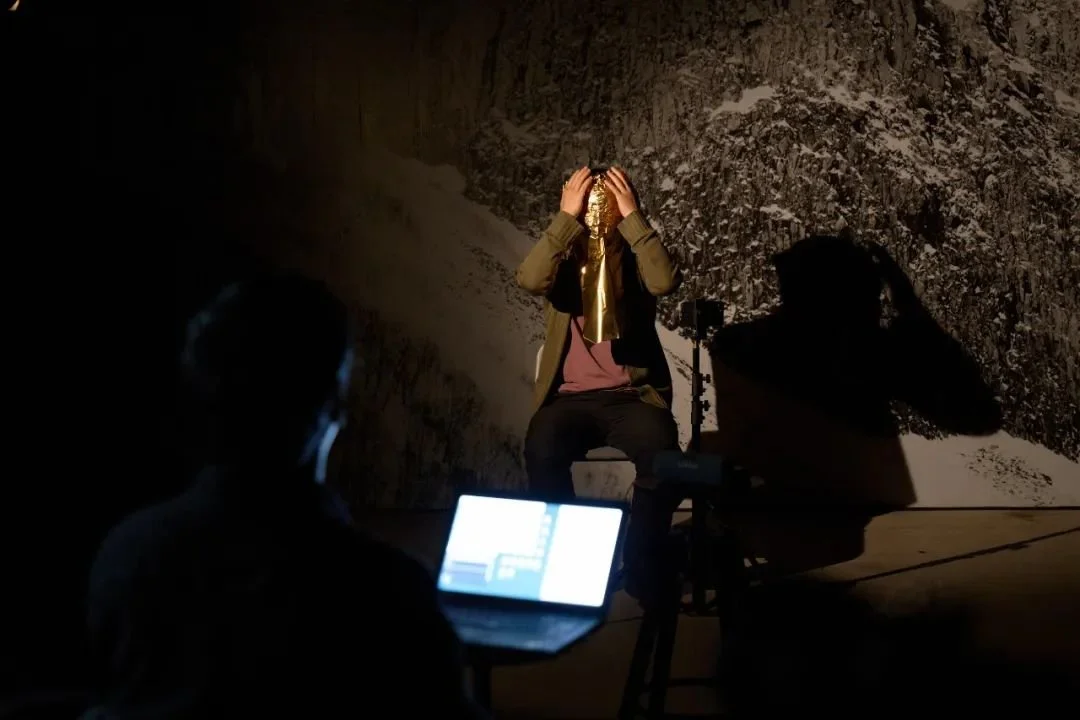
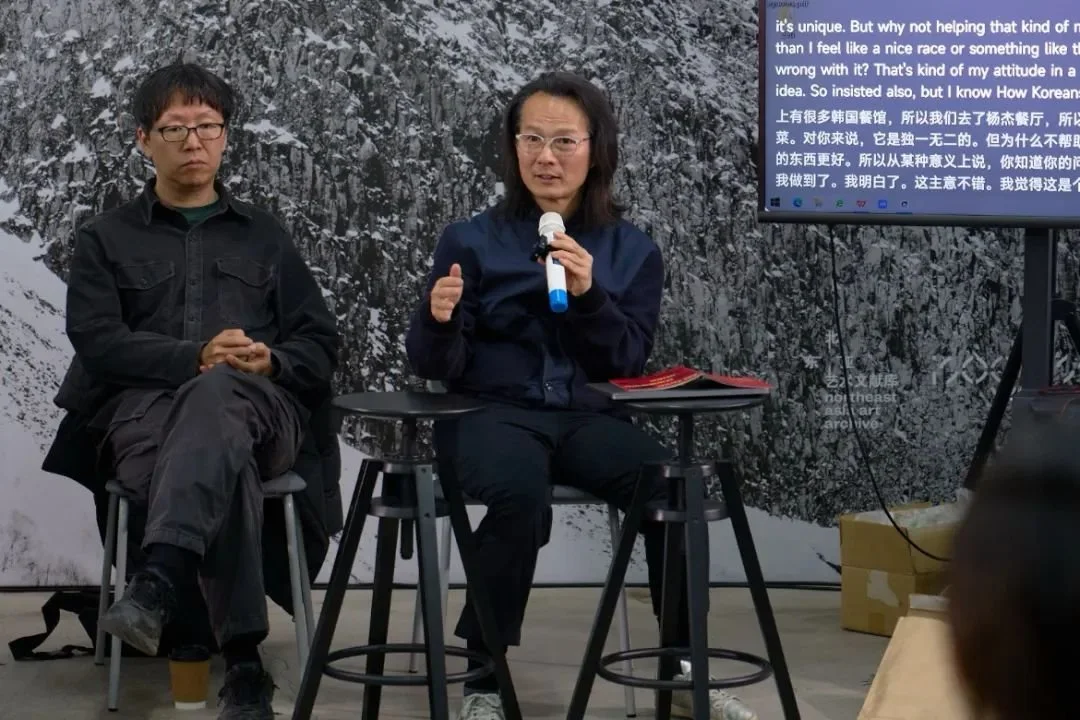
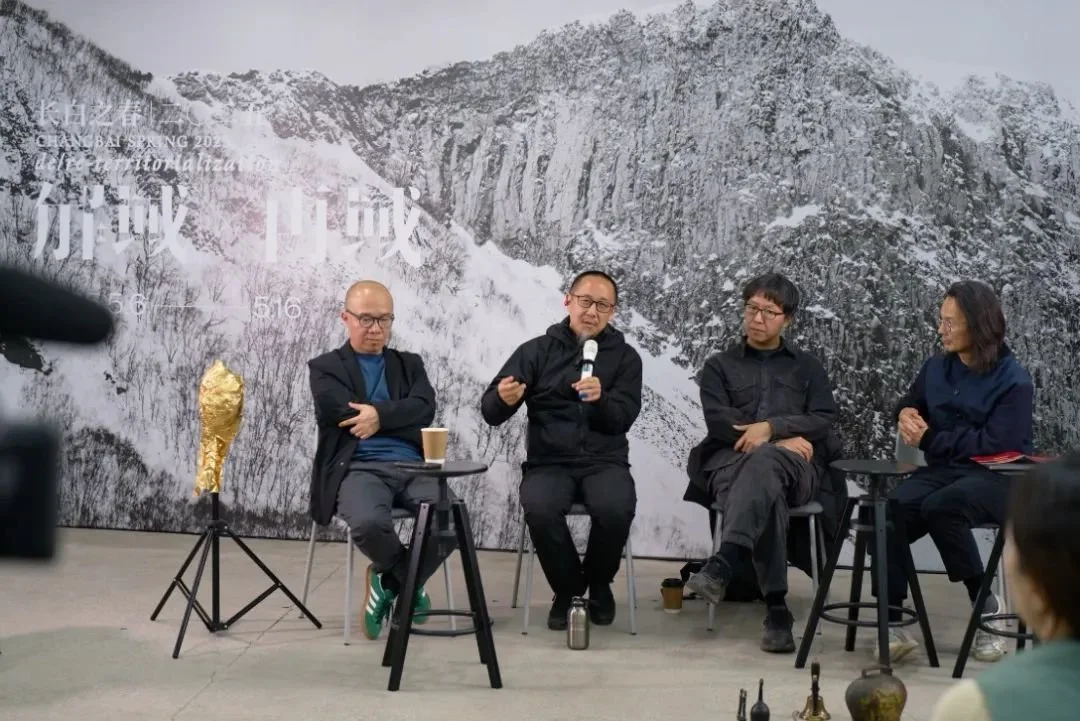
8. SEMINAR
Phonographic Yanbian:
Field Recording and Sound Making
Panelists: Aki Onda, Hankil Ryu, Yan Jun; Moderator: Ou Ning
Friday, May 9, 2025
20:00-22:00 · Northeast Asia Art Archive, Erdaobaihe
Aki Onda's interest in Yanbian is rooted in his family history. His grandparents migrated from the Korean Peninsula to Osaka in the 1930s. His father, a member of Japan's national hockey team, married a Japanese abstract painter and adopted her surname, gaining Japanese citizenship. Growing up as a Korean in Japan, Onda faced discrimination and had a difficult childhood. Influenced by his mother, he embraced art early on, identified as a girl, dropped out of school, and later lived in the UK and US with little attachment to national identity. He discovered sound recording as a way to preserve memory. Yanbian Cassette Memories is an auditory response to the region's landscape and history—a site-specific production that captures both current soundscapes and layered historical echoes.
Hankil Ryu noted that the residency's theme, “deterritorialization and reterritorialization”, resonated with his recent concepts of “traction and repulsion”—both describing cyclical processes. After visiting forests, villages, and Korean-Chinese communities, he was struck by their cultural continuity with Korea. Yet his own sonic work is not site-specific: using max/msp software, he generates abstract noises devoid of narrative or fixed meaning—sonic reflections of philosophical inquiry.
Ryu and Yan Jun discussed the nature of time in sound. Unlike spatial concepts, sound unfolds through time. The idea of “feedback”—a loop with no clear start or end—is like a snake eating its tail. Recording allows sound to echo from past into future. In the performance, Yan Jun recorded his own voice and replayed it live, layering past and present. He called this an “interface”: both a face between and a translator. At the Northeast Asian Art Archive, this interface questioned the endless loop of time: can there be a future with no past, or a past with no future?
9. SEMINAR
Pictorial Dongbei: Archiving and Dearchiving
Panelists: Sun Haiting, Li Yong, Zeng Han, Zhang Xiao; Moderator: Zhang FeiFan
Saturday, May 10, 2025
9:00-12:00 · Northeast Asia Art Archive, Erdaobaihe
Sun Haiting, Zhang Xiao, and Zeng Han were the three photographers commissioned to conduct early field recording and photography in Northeast China alongside Ou Ning and Aki Onda in early April as part of the project. Their work aims to provide a new visual documentation for the project's future publication, distinct from existing historical archive images. Sun Haiting focused on “Manchurian Architecture,” beginning with documenting the current state of historical buildings in Changchun from the Manchukuo era. The commission responds to the general lack of high-quality documentation in existing Chinese, Japanese, and English publications on Manchukuo architecture. Sun presented his first batch of silver gelatin black-and-white photographs and shared how this project fits into his long-standing interest in urban studies and architectural photography..
Zhang Xiao has recently turned his attention to documenting folk processions, vernacular deities, rural aesthetics, and local rituals. In April, he traveled by car through Changchun and Shenyang, using platforms like Douyin and Xiaohongshu to locate destinations. Shooting up to 10,000 images a day, he scanned a wide range of obscure and uncanny folk scenes. From this massive trove, he compiled 42 themed A4-sized color zines titled The Grand Compendium of Folk Aesthetics: Northeast Special Edition, which he presented as artist-made magazines. When he returned in May for the residency, his project continued with additional photography in Harbin, Yanbian, and Dandong. The expanded zines will be part of the final exhibition in New York.
Li Yong's practice is rooted in his hometown of Fushun. On a century-old coal waste mountain, he photographed a series titled Here, Winter Is Also Spring, which focuses on retired coal miners who spontaneously gather there to cultivate the land. He captured the makeshift shelters built from discarded materials these elders collected from below. Refusing to be cast aside by modernity as “human refuse,” they attempt to reclaim value amid ruins.
Zeng Han has recently been investigating classical Chinese landscape painting through photography. Using ultra-high-definition tilt-shift cameras, post-production techniques, and long-scroll panoramic formats, he seeks to emulate the colors and composition of traditional landscape paintings. For this project, he was invited to photograph Mount Changbai, focusing on its geological and topographical features. Avoiding traces of human activity and literati symbolism, his images emphasize wilderness and the raw power of nature. His large-format black-and-white mountain photographs serve as the main visual identity for the residency. All four photographers’ Northeast works were exhibited on the first day of the residency.
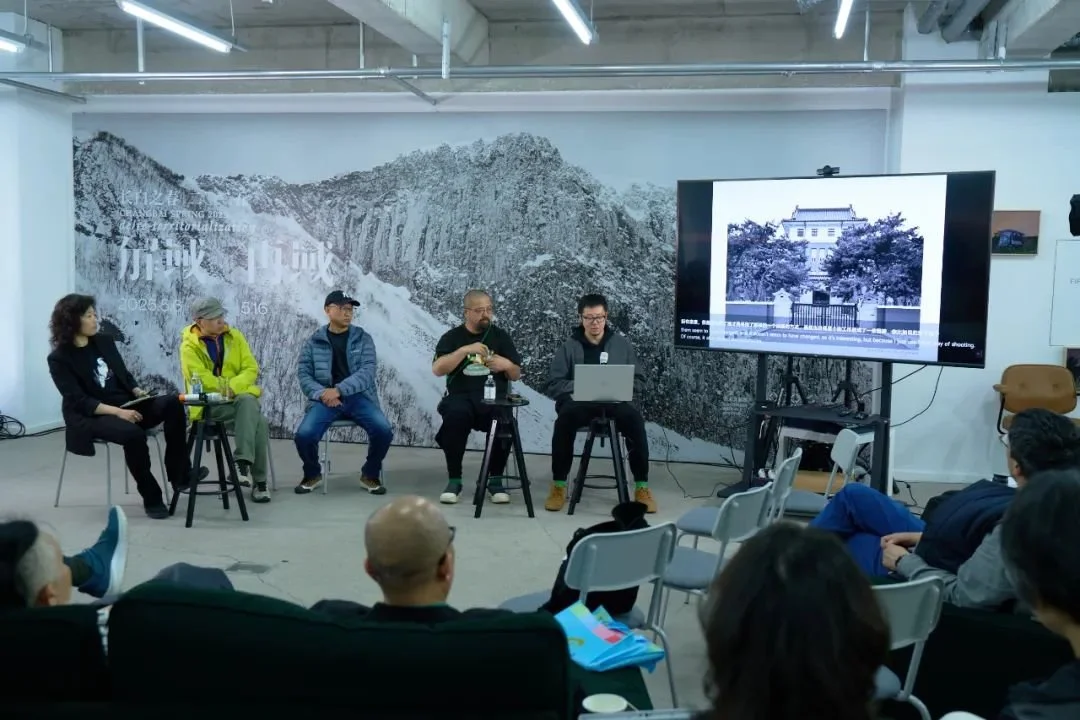
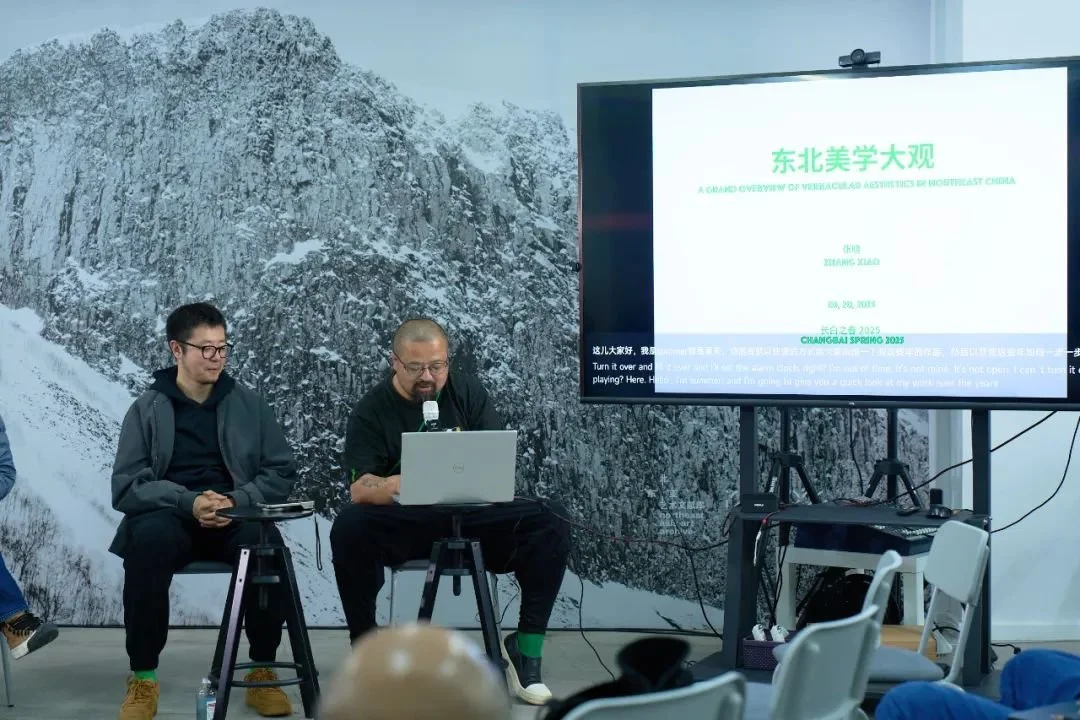
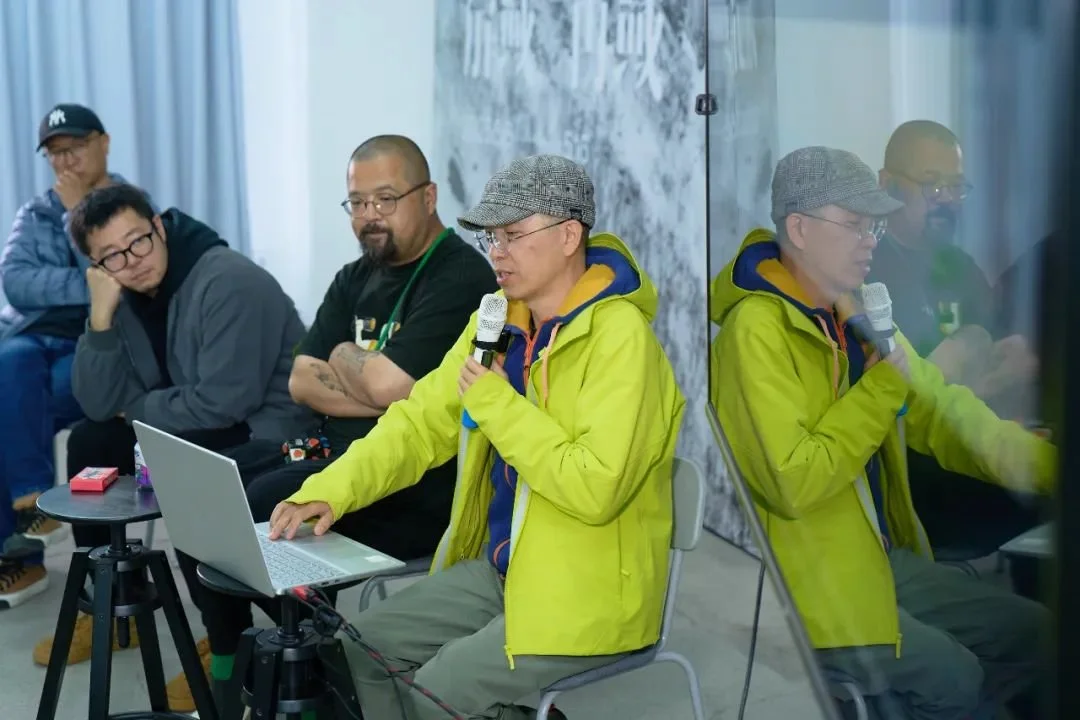
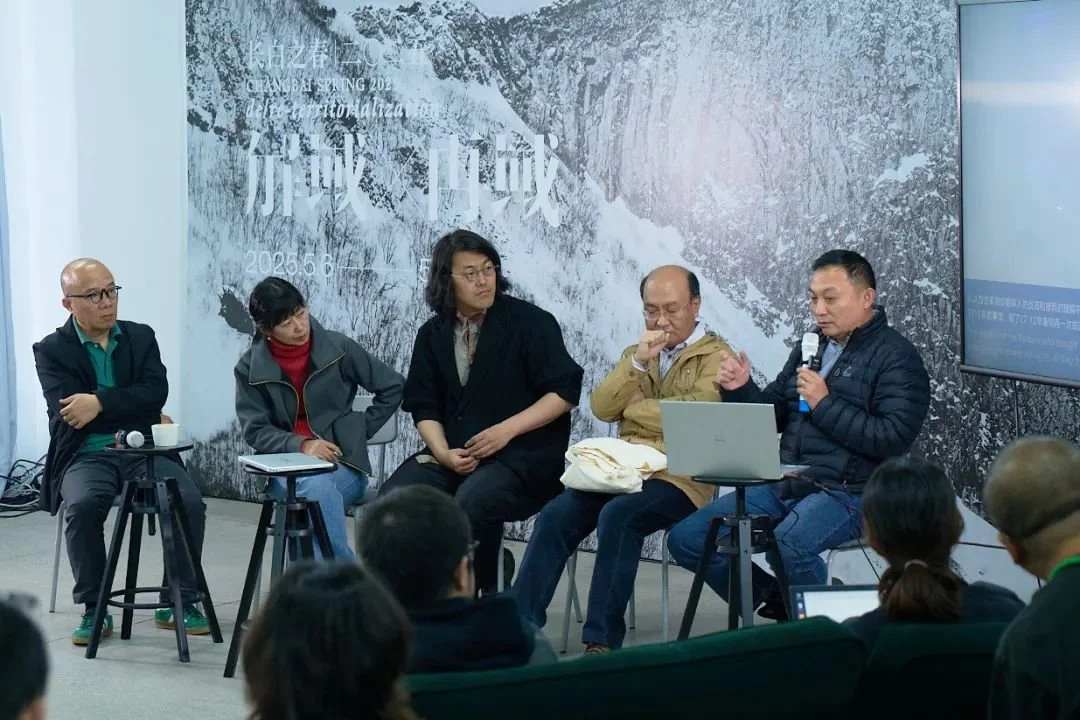
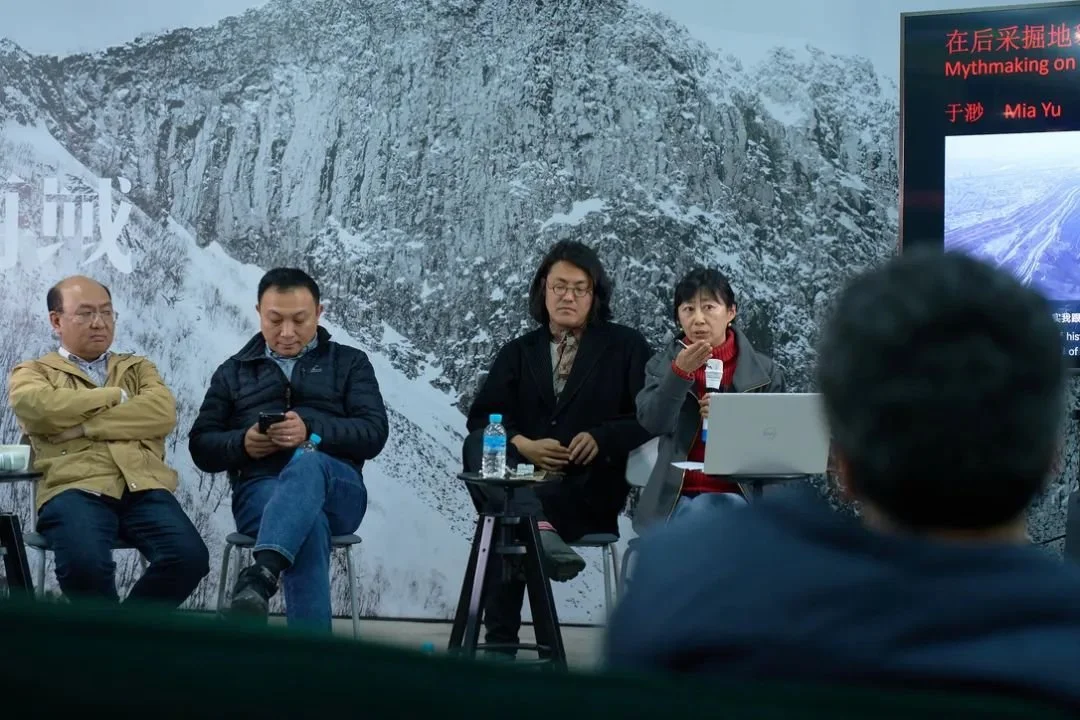
10. SEMINAR
The Historical Gaze and Rewritings on Northeast Asia
Panelists: Liang Chen, Liu Yan, Mia Yu, Song Nianshen; Moderator: Ou Ning
Saturday, May 10, 2025
14:30-17:30 · Northeast Asia Art Archive, Erdaobaihe
Song Nianshen's 2018 book The Tumen River Demarcation: Making Borders in Modern East Asia (Cambridge University Press) remains the only English-language academic work focused on the Jiandao/Tumen River border dispute. Tracing the history of Korean migrants who crossed into Manchuria in the 1860s, Song explores how these movements sparked decades-long disputes between China, Korea, and Japan—woven through major events like the First Sino-Japanese War, Russo-Japanese War, and WWI. The region's ambiguous borders became a geopolitical fault line layered with Russian colonial rail expansion, Qing resettlement policies, the clash between imperial suzerainty and modern international law, Japanese imperialism, and Korean nationalist decolonial efforts. The book convincingly supports Owen Lattimore's framing of Manchuria as a “cradle of conflict.” By unpacking these entanglements, Song offers a multi-sided, multi-layered retelling of Yanbian's history, concluding with Zhang Lu's 2010 film Dooman River, which echoes these historical tensions in the present. His book served as a key reading for the Yanji and Longjing fieldwork.
Liu Yan has authored two influential books on Northeast China: History · Memory · Production (2016) and Contemporary North (2024). His research spans cultural phenomena from Zhao Benshan's Spring Festival Gala debut in 1990 to er ren zhuan folk performance, industrial heritage in Tiexi, and waves of TV dramas, films, literature, and visual art on Northeast subjects. For this project, he focused on “anti-espionage” films from the post-Cultural Revolution, pre-Reform transition era. Examining films like The Black Triangle (1977, shot in Harbin and Lüshun) and Spy Shadow in Donggang (1978, shot in Dalian), he analyzes how Northeast China is portrayed as a frontier of national security, industrial modernity, urban everyday life, and historical transition.
Mia Yu's drone footage of the West Open-Pit Mine in Fushun, featured in her Eme Universe, is another act of historical witnessing. Once a “dragon vein” site forbidden from mining, the land was opened to civilian extraction after the First Sino-Japanese War and changed hands among gentry, the South Manchuria Railway, the Soviet Red Army, and the PRC—until it was depleted and abandoned. Yu reimagines the site as a mythic post-extraction/post-industrial stage, summoning the Manchu earth goddess Eme via aerial camera as medium.
Liang Chen shared two interdisciplinary exhibitions grounded in historical research: From Andong to Dandong: Rafts, Broken Bridges, and Passersby on the Yalu River (2022) and The Center as Margin: Border Rivers, Bridges, and Sites of Memory in Northeast Asia (2023–2024). Hailing from Dandong—China's largest border city facing North Korea's Sinuiju—Liang notes how the city reflects a typical Northeast urban layout shaped by railway colonialism. Dandong's strategic location at the Yalu estuary lends it layers of regional and international significance. The first exhibition reconstructed this complex local landscape. The second expanded to six transnational rivers in Northeast Asia—Yalu and Tumen (China–Korea), Ussuri, Heilongjiang, and Ergun (China–Russia), and the Khalkha River (China–Mongolia). Rather than political division, the project highlights how these rivers have historically enabled exchange and shared memory.
11. SCREENING
Wang Tuo
Smoke and Fire, 2018, single channel 4K video (color, sound), 31' 17"
Tungus, 2021, single channel 4K video (color, sound), 66' 00''
Zhang Meng
The Piano in a Factory, 2011, feature film, 119' 00''
Q&A with Wang Tuo
Saturday, May 10, 2025
19:30-23:00 · Northeast Asia Art Archive, Erdaobaihe
These are two single-channel video works from Wang Tuo's Northeast Tetralogy (2018–2021). Fireworks is loosely based on the 2019 Zhang Koukou revenge case but reimagined in a rural-urban setting in Northeast China. A migrant worker, surrounded by film props, reads and reenacts tales from Feng Menglong's Stories to Awaken the World—notably “Fan Chenqing's Brotherhood” and Shi Jianqiao's assassination of warlord Sun Chuanfang. Shot in a Chris Marker–style black-and-white still montage, the film later shifts to slow-motion color with asynchronous sound as the protagonist returns home to seek vengeance. The interplay between quoted text (black-and-white) and narrative action (color) highlights tensions between moral sentiment and legal justice.
Tungus takes place during the 1948 siege of Changchun in the Chinese Civil War. Two soldiers from a Korean Independence Division flee into the forest, while their home—Jeju Island—is engulfed in the April 3rd Uprising. A middle-aged intellectual refuses to leave the city and, in a hallucination brought on by hunger, encounters the ghost of Guo Qingguang, a student martyr from the 1919 May Fourth Movement. Lost and unable to return home, the deserters drift into a dreamlike landscape evoking Peach Blossom Spring and A Sheep's Path to Immortality. The film ends with a memory of Korean farmers’ music. The title Tungus refers to the Tungusic peoples of Northeast Asia—Manchu, Evenki, Oroqen, Xibe, Hezhe, and others. Wang Tuo joined the post-screening discussion online to unpack the film's many hidden layers.


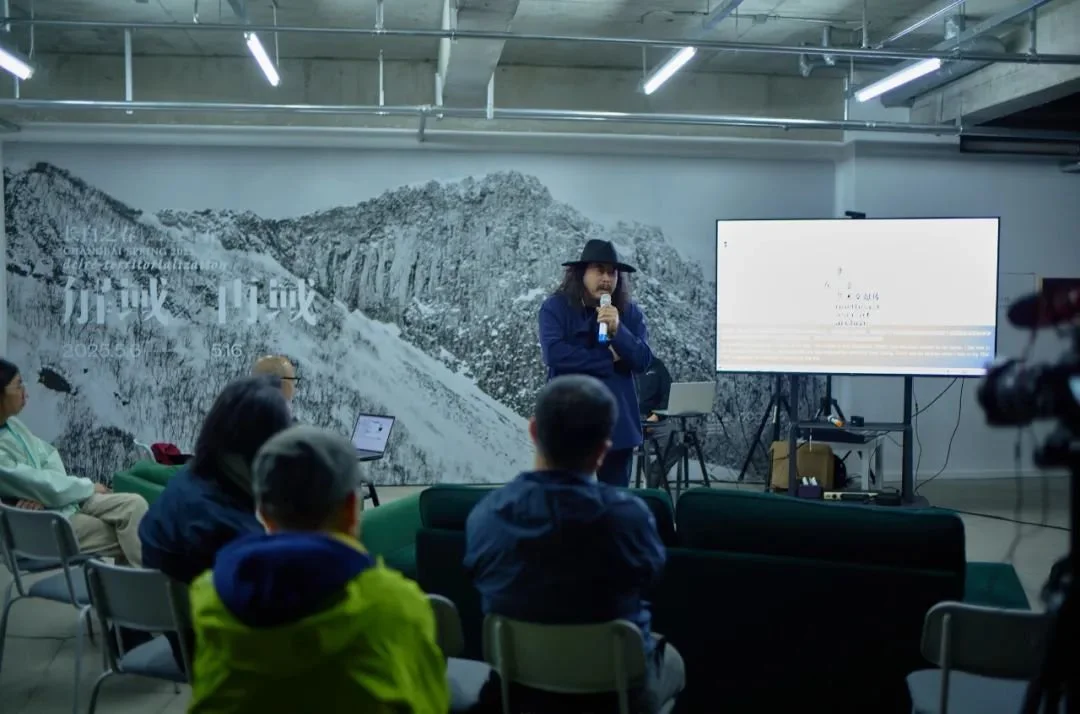
12. SCREENING
Geng Jun
The Hammer And Sickle Are Sleeping, 2013, feature film, 53' 00”
Gu Tao
Aoluguya, Aoluguya, 2007, documentary, 88' 00''
Sunday, May 11, 2025
9:00-12:00 · Northeast Asia Art Archive, Erdaobaihe
Geng Jun's The Hammer and Sickle Are Sleeping marked the beginning of his signature dark comedy style in absurdist films set in Northeast China. It also established a regular cast and crew, including actors Xu Gang, Zhang Zhiyong, and Xue Baohe. Like many of his films, it was shot in his hometown of Hegang. The plot revolves around a trio of petty criminals in a desolate village—“two people doing bad things meet another doing bad things, and the three team up to do worse.” The film closes with two cleverly embedded documentary clips: one of a child smoking and singing karaoke on the street, and another of a poet from Harbin's Ice Shard Society reciting Saying Goodbye to Cambridge Again. These moments underscore the film's interplay between fiction and everyday reality.
Aoluguya, Aoluguya is the first installment of Gu Tao's “Evenki Trilogy,” followed by Yuguo's Holiday and E·n·d·a·k·h·a·n. The film was made possible through Gu's father Gu Deqing's longstanding friendship with Maria Suo, an elder of the reindeer-herding Evenki people in the Greater Khingan Mountains. The protagonist Vega is a painter and poet who once studied at Minzu University in Beijing and has returned to live with his sister Liuxia. Since 2003, the Evenki were relocated to a government settlement at the foot of the mountains—many, unable to adjust, eventually returned to the forest. Vega and Liuxia are among them. Frequent drinking, fighting, grief, and transgressions become emotional outlets in a way of life that's rapidly disappearing. Gu Tao's steady documentary gaze allows his subjects to forget the camera, drawing close to the raw truth of survival.
13. SEMINAR
The Immortal and Mortal Coils: Pan-Shamanization and Mythorealism
Panelists: Geng Jun, Gu Tao, Zhang Meng; Moderator: Zhang Xianmin
Sunday, May 11, 2025
14:30-17:30 · Northeast Asia Art Archive, Erdaobaihe
In this film-sharing session, Zhang Xianmin, joining online, traced the demand for image production back to the Age of Exploration, pointing out how overseas colonization created a rigid need for visual documentation. From early naturalist and geographic illustrations to ethnographic and exploration photography after the invention of the camera, all stemmed from a desire to explore and control the “other.” In Asia, the Japanese Empire adopted a very different colonial model than the Europeans. The Manchuria Film Association, founded in 1937 in Xinjing, divided its film production into two categories: “entertaining the people” and “enlightening the people.” The former focused on entertainment, while the latter served colonial propaganda, including science popularization and agricultural technology promotion. After the Soviet Red Army took over in 1945, they seized most of the film reels. Only about 130 films were received by the Northeast Film Studio (formed by key members of the Yan’an film troupe) moving south from Hegang. These are now housed at the China Film Archive in Baiziwan, Beijing. In 1950, Premier Zhou Enlai signed a ban prohibiting public access to these films. Based on this legacy, the Northeast Film Studio was transformed into the Changchun Film Studio, the first film studio in the People's Republic of China. Over the years, Changchun has produced more than 2,000 narrative and dubbed films, shaping the viewing memories of generations of Chinese audiences.
Gu Tao shared excerpts from four documentary projects currently in progress: Clear Grasslands, The Sunlight in Kangyemu, The Blooming Peony, Shamanic Map, and a short phone-shot film made in Changbai Mountain titled Changbai Night. Clear Grasslands follows a couple in Tongliao, Inner Mongolia, seeking help from a shaman during a marriage crisis. Shamanic Map is a nomadic journey starting in his hometown of Hulunbuir, moving west through Ningxia, Gansu, Qinghai, and Xinjiang, then east to the three northeastern provinces, filming shamans along the way. This is Gu Tao's return to shamanism after his 2011 film The Dusk of the Gods, which documented the last Oroqen shaman, Guan Kouni, who by 2007 had been turned into a cultural showcase by local government. Today, shamanism in Northeast China has been broadly absorbed into tourism, stripped of its original context. Yet the belief persists in everyday life, influencing thoughts and behavior—a phenomenon Wang Tuo calls “pan-shamanism.” Psychologically, North China remains a land where gods and humans share space.
Geng Jun reflected on his childhood in Hegang and the flourishing grassroots film-watching communities around the year 2000 that shaped his perspective. Although most of his works are fiction films, he deeply values the nourishment documentaries provide. A good documentary, he said, gives you “a rare chance to spend 90 minutes or a couple of hours with someone onscreen.” He shared clips from his only documentary, The Journey of Poetry and Sickness (2010), offering a glimpse into the lives of poet Zhang Xixi and his childhood friends—Xu Gang, Zhang Zhiyong, and Xue Baohe—who would later become his regular collaborators. The term “magical realism” as used by Yan Lianke aptly describes Geng Jun's fictional works: they feel surreal and absurd, yet are ultimately rooted in realism. For him, reality is more surreal than fiction, which is why even his fictional films function as documentary archives. The ruined buildings and homes in The Hammer and Sickle Are Sleeping are a visual record of Hegang's collapsing neighborhoods before urban demolition and redevelopment in 2015.
Zhang Meng recalled his high school years in Northeast China during the era when “collectivism broke into countless individuals,” and “unemployment was everywhere.” While studying at the Central Academy of Drama, he encountered Italian Neorealism, the French New Wave, Kurosawa, and anarchist cinema via pirated DVDs. After graduation, he returned to his hometown of Tieling, where he wrote skits for Zhao Benshan's Spring Festival Gala and became vice president of Benshan Media Group. Later, borrowing money from local gangs, he made The Piano in a Factory. The surreal premise of building a piano from steel could only come to life in the Northeast. He had seen self-made pianos in local theaters, and when he worked in interior renovation, the steel market allowed anyone to custom-make parts to suit his odd requirements. Only in Northeast China, when a disbanded collective regathers, can the impossible become possible.

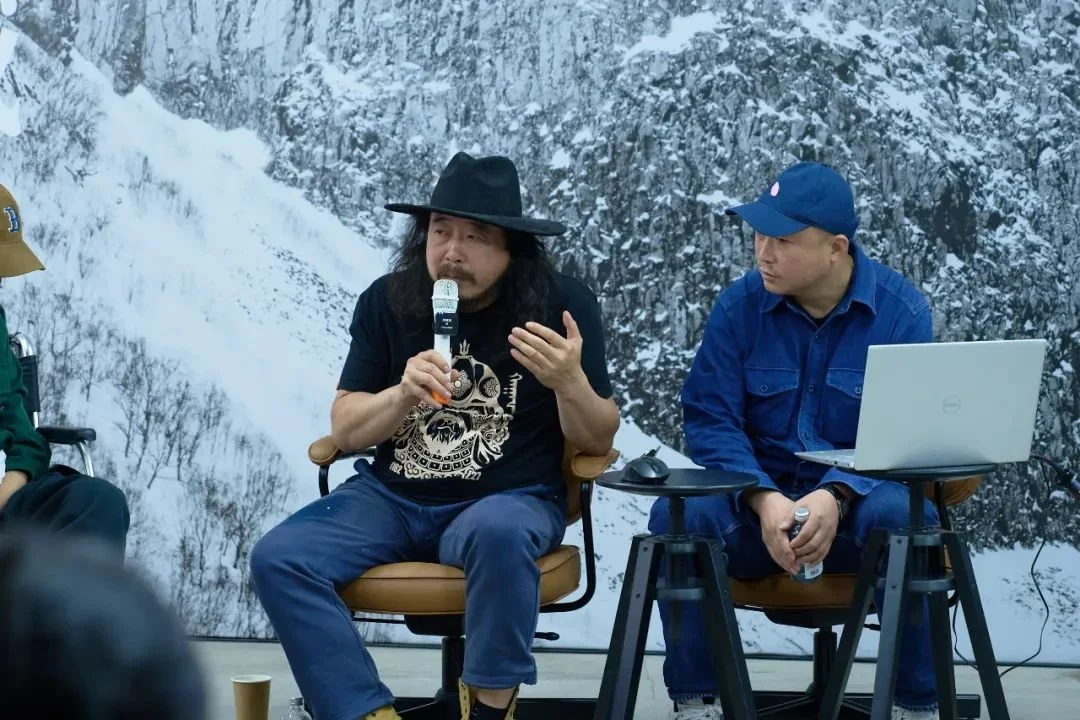


14. SEMINAR
The Local Turn: From Globalization to Relocalisation
Panelists: Irina Botea Bucan+Jon Dean, Kyong Park, Haeju Kim, Brian Kuan
Wood;
Moderator: Li Jiaqi
Monday, May 12, 2025
9:00-12:00 · Northeast Asia Art Archive, Erdaobaihe
Kyong Park, speaking online from Seoul, asked, “Is globalization also a form of localism?” Drawing from two research exhibitions—The New Silk Roads (2007–2010) and Imagining Eurasia (2015–2018)—he explored how cities from Istanbul to Tokyo reveal the interplay between global forces and local conditions. Each city disrupted the logic of globalization in its own way, showing that while local contexts shape global processes, globalization still dominates. Park cautioned against overly romantic ideas of a “local turn,” which may be more aspirational than real.
Haeju Kim discussed her curatorial approach for the 2022 Busan Biennale, We, on the Rising Wave, which used Busan's shifting terrain and migrant history to shape the exhibition's metaphor of “waves.” The show emphasized connections between past and present, local and global, challenging the Biennale model as a one-way export of global art. Drawing on Suk-Jung Han's Manchurian Modernity, Kim noted postwar South Korea's industrialization was not a rupture from colonial rule but a continuation, rooted in Japanese imperial influence and Cold War geopolitics.
Brian Kuan Wood, whose grandmother is from Dandong, reflected on Gaza's devastation as the site of globalized conflict. He critiqued Zionism's racist intellectual roots and the U.S.'s support for Israel as capitalism-driven. Sharing essays from e-flux Journal, he examined how crises like the pandemic created a new kind of closeness—a “small world” intimacy enabled by digital connection. His 2023 Taipei Biennial, co-curated with Freya Chou and Reem Shadid, responded to these shifting global dynamics.
Irina Botea Buoan and Jon Dean presented their work on Romania's Cămin Cultural—community centers rooted in 19th-century workers’ clubs and expanded under socialism. In projects in Timișoara and Fundata, they collaborated with local women on embroidery, filmed on analog formats, and recorded field audio to highlight Bernard Stiegler's idea of “amateur” labor driven by love and dedication. Their work reflects a broader post-globalization interest in revaluing the local.
15. SEMINAR
The Contemporary Vernacular: Arts and Regionalism
Panelists: Yuan Fuca, Liu Chuanhong, Zhang Wenzhi; Moderator: Zhang Feifan
Monday, May 12, 2025
14:30-17:30 · Northeast Asia Art Archive, Erdaobaihe
Yuan Fuca shared her residency project on a remote island off the coast of North Borneo, Malaysia, where artists engaged with Indigenous communities in a process of mutual exchange—blending local knowledge with outside perspectives. She likened it to a Möbius strip: a continuous loop of learning, transformation, and gratitude for difference. She also discussed a field research project in the Hengduan Mountains, where artists immersed themselves in the region's geography, ecology, and communities. Regarding Changbai Mountain, she cautioned against framing it solely as a Sacred Natural Site (SNS), advocating instead for a lens of cultural anthropology and political ecology to foreground overlooked communities and rights. As a native of Changchun, Yuan described her curatorial and research work in the region as a healing process—an attempt to confront the lingering malaise she calls the “Northeast Syndrome.”
Liu Chuanhong, also from Changchun, has long created narrative paintings based on regional geography and history, including the Taihang Mountains, southern Anhui, and the Lijiang River. His multi-panel works blend cartographic and archival references with autobiographical, first-person storytelling to form a unique literary visual style. For this project, he focused on Liu Jianfeng, a late Qing official who surveyed Changbai Mountain and authored Notes on the Changbai Mountain Rivers and Ridges. Later, Liu renamed himself Liu Datong and attempted to establish a short-lived Datong Republic in Antu after the 1911 Revolution. Liu Chuanhong's paintings imagine a cross-temporal dialogue with Liu Datong, including fictional encounters with figures like Song Jiaoren. The finished works will be shown in the New York exhibition.
Zhang Wenzhi's recent work centers on his hometown of Dalian, inspired by the Dalian Natural History Museum, whose layered history includes being a Russian administrative hub, a Japanese-operated resource institute, and later a museum after 1959. Drawing on a 1927 panoramic map titled Guide to Transportation and Industry in Manchuria and Mongolia, Zhang traced Japan's meticulous colonial planning in Northeast China. His paintings explore this museum's past and its exhibitions—blending stories of colonial science, industrial exploitation, whaling, tiger breeding, and animal rewilding. Much like the South Manchuria Railway Company's surveys, these early geographic and ethnographic studies were in service of empire, giving rise to many modern academic disciplines. In today's art practices tied to place, decolonial critique must be paired with the invention of a “contemporary vernacular”—a language rooted in locality and distinct from global cultural homogeneity.
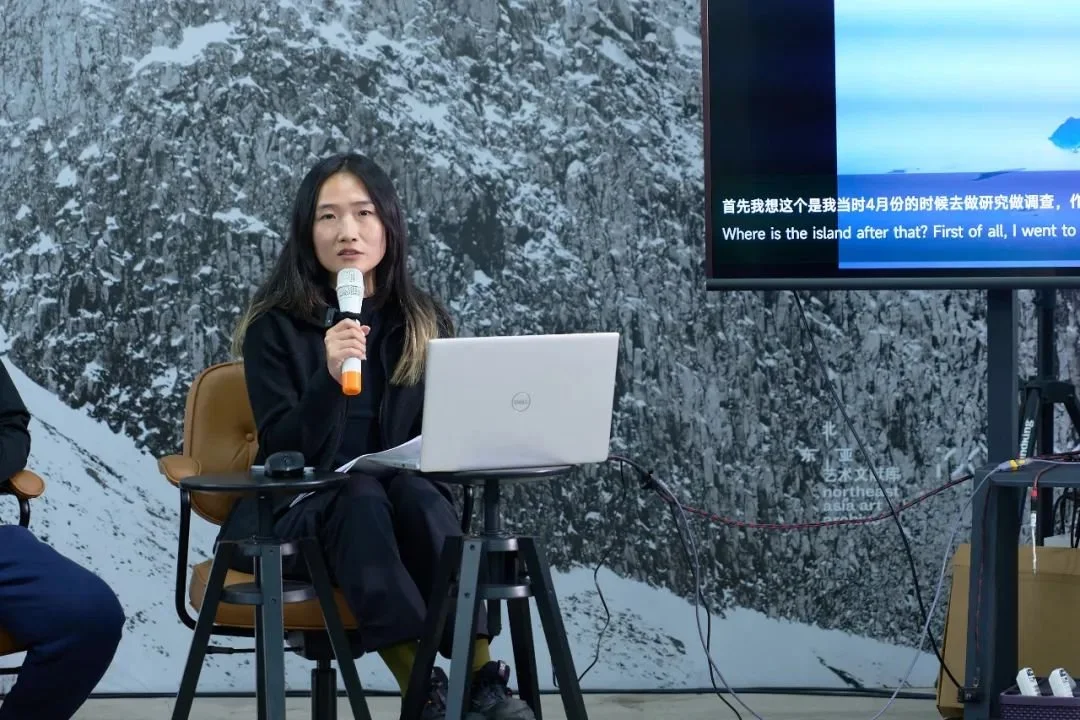
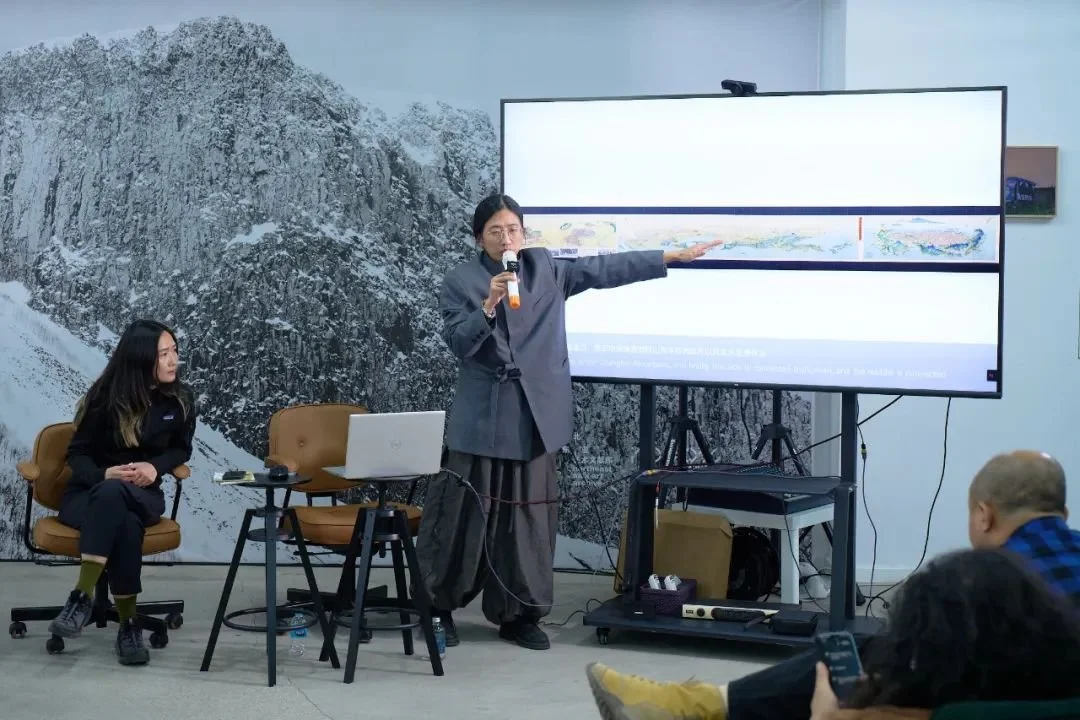
16. Exhibition
de/re-territorialization
May 13 to October 18, 2025
Northeast Asia Art Archive, Erdaobaihe
The day before we departed from Erdaobaihe Town for field research in Changchun, Shenyang, and Dandong, we opened the Northeast Asia Art Archive exhibition to the public by appointment. The show featured newly commissioned works by Sun Haiting, Zhang Xiao, Zeng Han, Liu Chuanhong, and Liang Chen; existing works by Li Yong and Zhang Wenzhi; and a video-on-demand program of sound and moving image performances, including Yanbian Tape Memory by Aki Onda, Interface: Traction and Repulsion by Yan Jun & Hankil Ryu, Eme Cosmos and Amber by Mia Yu, Fireworks and Tungus by Wang Tuo, Hammer and Sickle Are Resting by Geng Jun, Aoluguya, Aoluguya and Changbai Night by Gu Tao, and The Piano in a Factory by Zhang Meng.
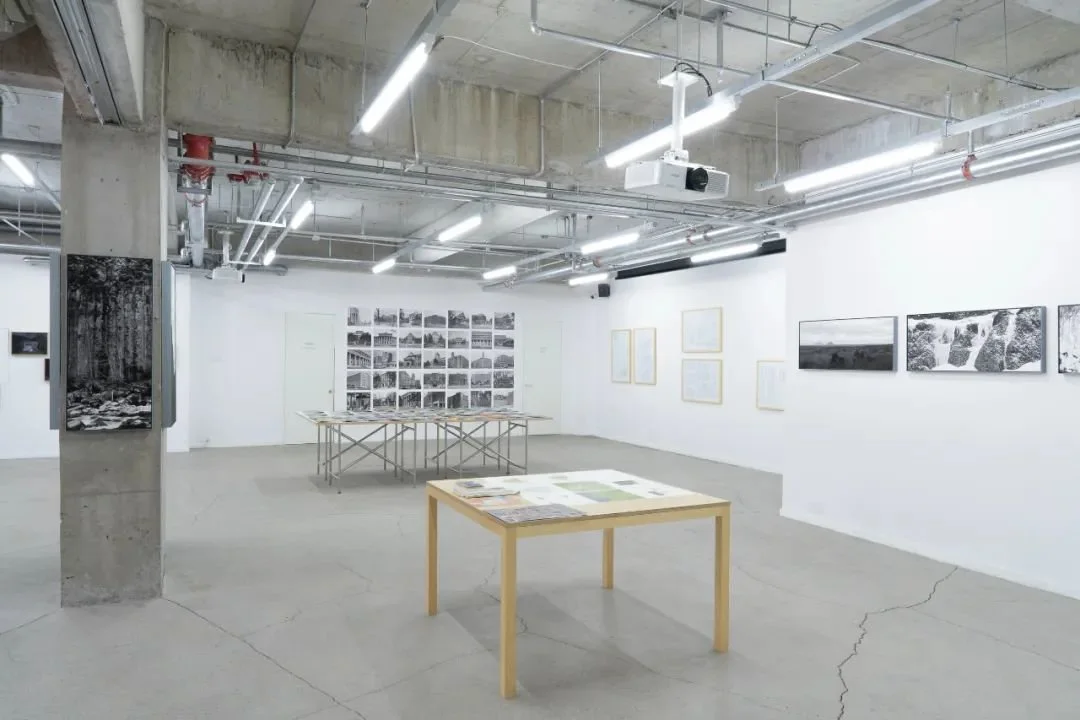
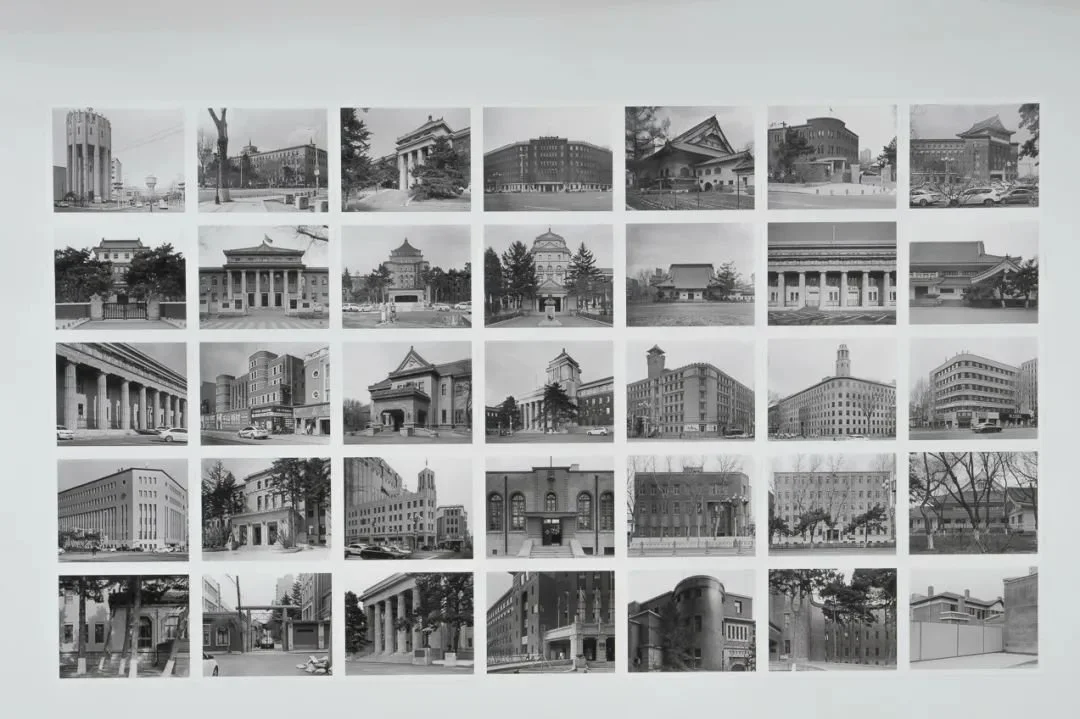
Sun Haiting, Manchurian Architectural Archives, 2025, archival pigment print on 100% baryta cotton paper, 44 × 36 cm, commissioned by the Northeast Asia Art Archive.
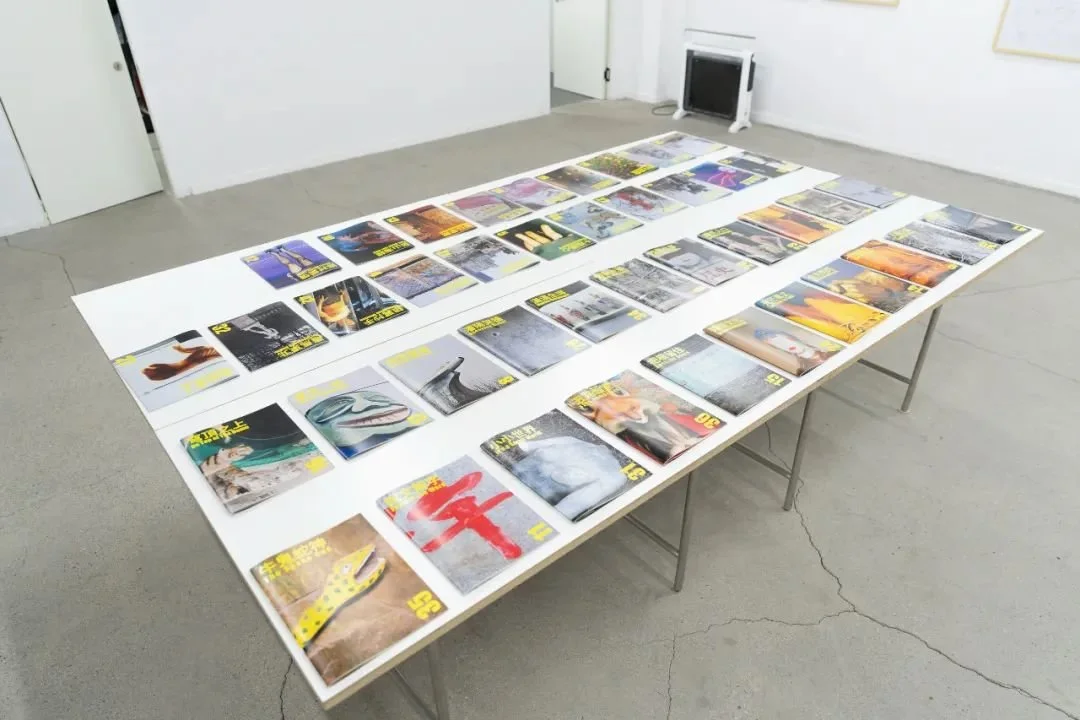
Zhang Xiao, Folk Aesthetic Panorama – Northeast Special Edition, 2025, artist's zine, 30 × 22 cm, 42 issues, commissioned by the Northeast Asia Art Archive.

Zeng Han, Changbai, 2025, archival pigment print on classical photogravure paper, 98 × 42 cm, commissioned by the Northeast Asia Art Archive.

Li Yong, Here, Winter is Also Spring, A-04, A-12, B-03A, B-03B, B-08, C-02, 2020, archival pigment prints, wood frames, 60 × 45 cm, courtesy of the artist.
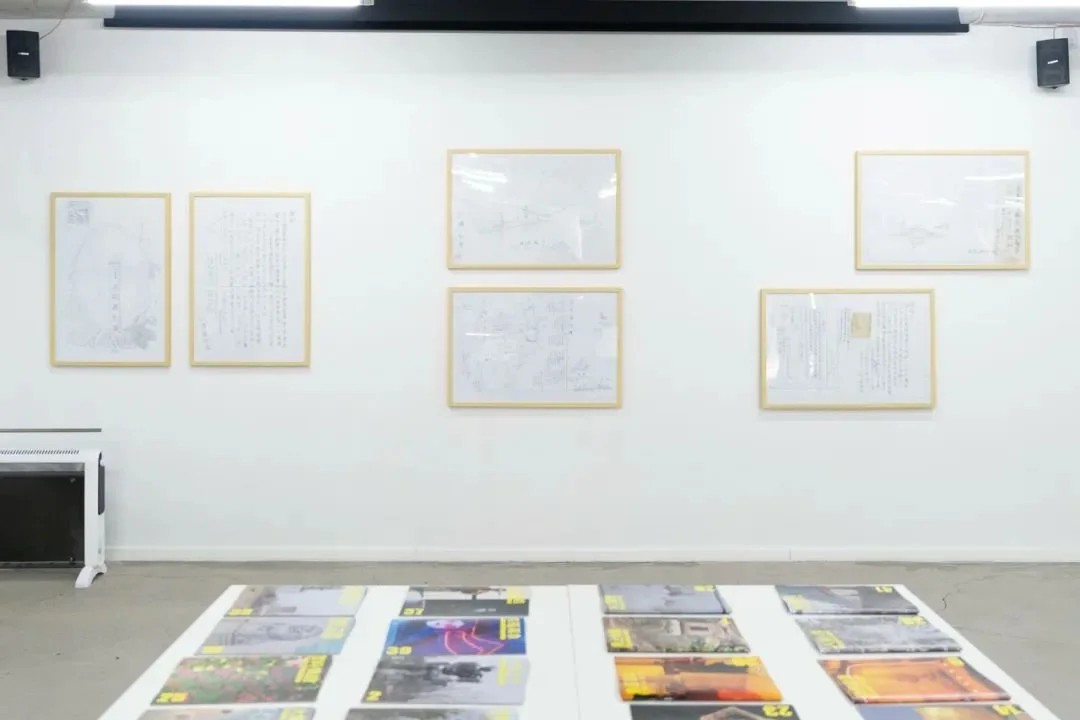
Liu Chuanhong, Datong Republic, 2025, six oil painting drafts, pencil on paper, 76 × 53 cm, commissioned by the Northeast Asia Art Archive.
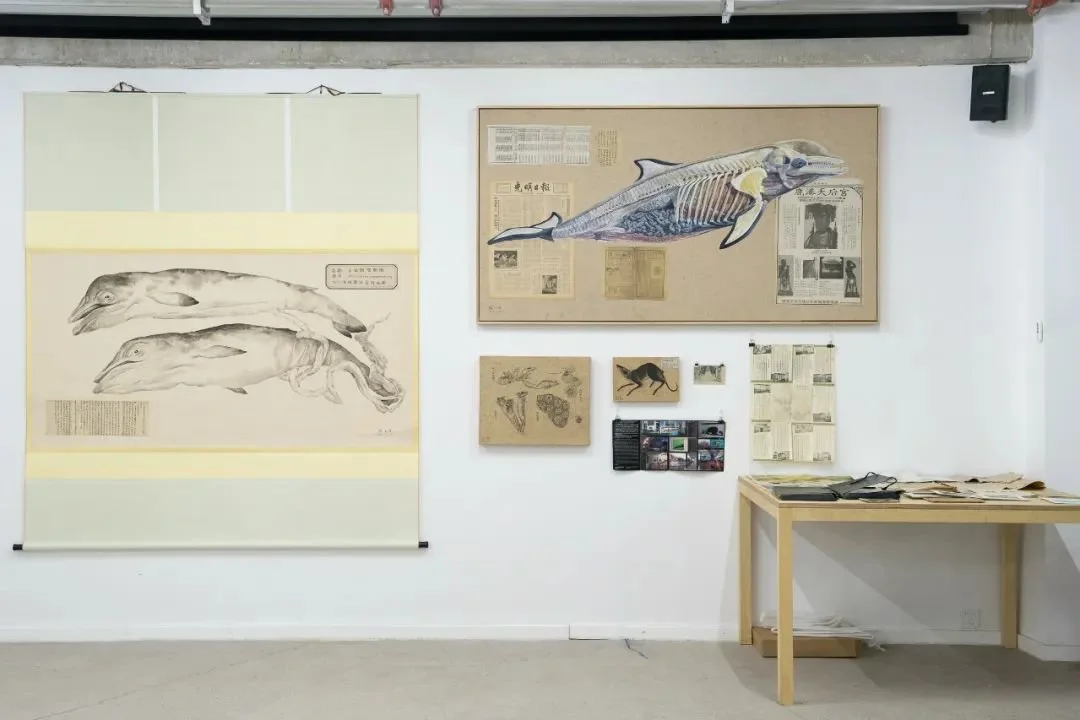
Zhang Wenzhi, from the Natural History Museum series: Gemini, 2024, ink on paper with historical documents, 88 × 172.5 cm (image), 207 × 177.5 cm (mounted); Mazu Fish, 2024, color on paper with historical documents, 96 × 179.2 cm; Whale Barnacle, 2024, ink on paper, 40 × 50 cm; Indohyus, 2024, ink on paper, 20 × 30 cm. All works courtesy of the artist and Art Labor Gallery.

Liang Chen, Cuoluozi: A Redesigned Shelter, 2025, outdoor installation, mixed materials, 5.4 × 5.4 × 5.4 m, commissioned by the Northeast Asia Art Archive. Photo: Qi Shaohui, © NAAA
17. Field Trip
Manchurian Utopia:
The Historical Architecture of Ultra-Modernism
Led by Liang Chen, Liu Chuanhong
Wednesday, May 14, 2025
14:00-17:00 · The former State Council and its ministries of Manchukuo, Manchukuo Film Association, Japanese Shinto shrine Kenkoku Chureibyo
Hsinking (Changchun)
After defeating the Qing in the First Sino-Japanese War and Russia in the Russo-Japanese War, Japan gained control of Korea, Taiwan, and the Liaodong Peninsula. The confidence built since the Meiji Restoration surged further. Both military expansionists and Kyoto School intellectuals began to envision an imperial rule distinct from Europe's, developing an alternative modernity called Pan-Asianism. This vision took architectural form in the capital planning of Manchukuo, with the rise of “Imperial Crown Style” and “Asia-Oriented Style” government buildings. Along Shuntian Avenue (now Xinmin Avenue) in Hsinking (today's Changchun), a cluster of ministries—such as Security, Justice, Economy, Transportation, Agriculture, Culture and Education, Foreign Affairs, Welfare, and the General Law Office—were built by Japanese architects like Masami Makino, Kensuke Aiga, and Tatsurō Ishii. These “Manchurian New Architecture” works blended Western eclecticism with Asian regional aesthetics, and scholars like Edward Denison and Guangyu Ren have since termed them “Ultra-Modernism.” This architectural tour of the “Eight Ministries” was led by Liang Chen.
During the Hsinking period, Changchun also saw the construction of Shinto shrines, Buddhist temples, and martial arts halls—such as the Manchukuo Shrine of Loyal Spirits, the Higashi Honganji Manchurian Branch, and the Jinmu Hall. The Manchurian Branch of Higashi Honganji, dedicated to the Jōdo Shinshū sect, was the largest temple Japan built in Hsinking. Modeled after its Kyoto counterpart, it used modern concrete rather than wood, granite for the base, white walls dotted with bell-shaped windows, overhanging red railings, and a hipped roof covered in copper tiles. When we visited, the structure had just completed renovations and its barriers were removed, allowing us to explore it up close.
Founded in 1937, the Manchuria Film Association—then hailed as the largest film studio in the Far East—left behind a campus of buildings including offices, sound stages, dubbing studios, film labs, and prop warehouses. These now form the Changying Old Site Museum. However, the section dedicated to the Manchuria Film Association is sparse, with only two small display windows briefly introducing its founding, its two directors (Kim Pyŏk-dong and Masahiko Amakasu), and film output stats. The rest of the museum focuses on the history of Changchun Film Studio, laid out chronologically with emphasis on the feature films it produced.
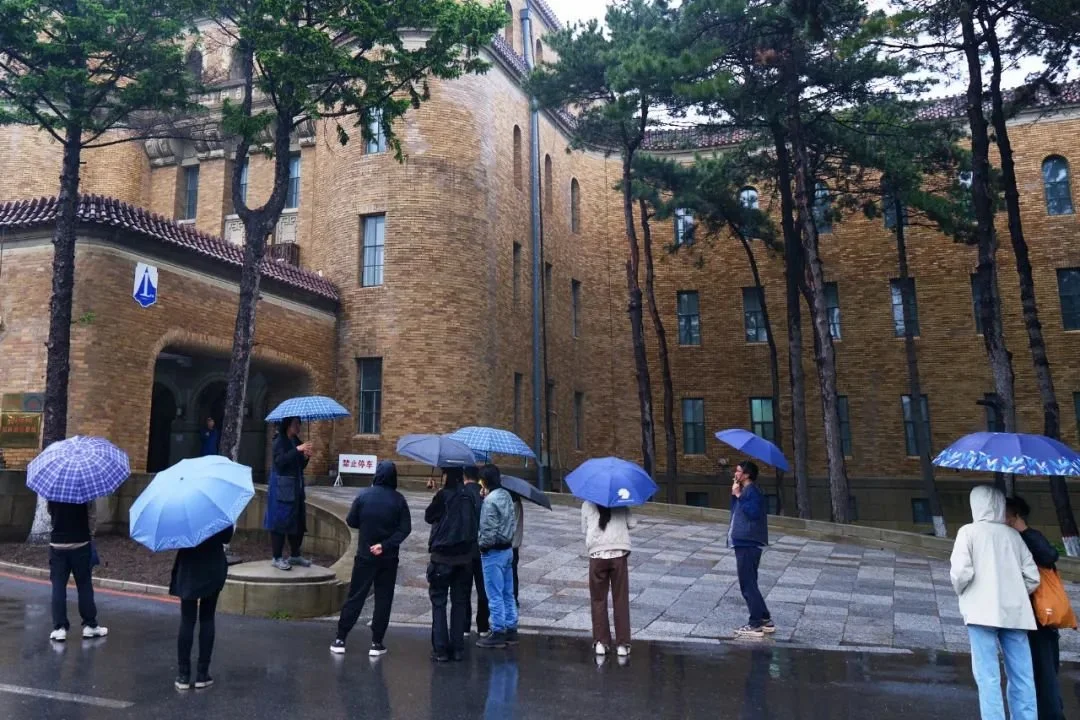



18. Field Trip
The Oldest Son of PRC: Soviet-aided Industrialization in Dongbei
Led by Li Zhiji
Wednesday, May 14, 2025
9:00-12:00 · China First Automobile Group (Soviet-aided Factories) Changchun
Northeast China is often called the “oldest son of the PRC” because the country's heavy industry first took root here. While Changying's transformation from the Manchuria Film Association into the “cradle of New China's cinema” is one example, the most emblematic case is undoubtedly FAW (First Automobile Works) in Changchun. Founded in 1953 with designs from a Soviet institute and a groundbreaking ceremony bearing Mao Zedong's calligraphy, FAW produced the first Chinese-made truck (the Jiefang) in 1956, followed by the first passenger car (Dongfeng) and the first luxury sedan (Hongqi) in 1958. Since then, the Hongqi has remained the designated vehicle for national parades and leaders, earning FAW the title “cradle of China's automobile industry.” In 1991, FAW entered a joint venture with Volkswagen and became a publicly listed company in 1997—an example of the reinvention of Northeast state-owned enterprises through reindustrialization. The early Soviet-era factory buildings and the new factory history museum still evoke the birth of New China's industrial age.
19. Field Trip
Manchurian Utopia:
The Historical Architecture of Ultra-Modernism
Led by Pan He, Mia Yu
Thursday, May 15, 2025
14:00-17:00 · The historical Japanese building group of former Naniwa Plaza, the former South Manchuria Railway Company of]ice buildings, Matsushima Hall, Shimono Corporation
Mukden (Shenyang)
We visited the historical site of the former Manchuria Medical University, originally established in 1907 as the Fengtian branch of Dalian Hospital by Gotō Shinpei, the first president of the South Manchuria Railway Company (SMR). Trained as a doctor, Gotō had served as a military quarantine officer during the First Sino-Japanese War and later as a health official in colonial Taiwan. His influence on Manchurian urban planning was significant. He believed that building a sustainable colony required, in order: schools, temples, and hospitals. In 1911, the South Manchuria Medical School was founded in Dalian, with the Fengtian branch serving as its affiliated hospital. The school became a full university in 1922 and moved to the Fengtian site, which was expanded accordingly. After 1945, the institution was taken over by China and incorporated into China Medical University in 1948. Surviving buildings include the main hall, hospital, auditorium, and library, all of which reflect the spacious, garden-style layout of the time.
We also visited the former Yamato Hotel in Shenyang (now the Liaoning Hotel), one of a chain of luxury hotels operated by the SMR between 1907 and 1945 in Dalian, Lüshun, Shenyang, Changchun, and Harbin. The Shenyang branch was designed in 1927 by Sōtarō Ōta, a Columbia University graduate, commissioned by the Onogi & Yokoi architectural firm. The seven-story building housed over seventy rooms and included a bar, billiard hall, barbershop, and a marble spiral staircase with non-slip leather treads. Upon completion, it became the tallest building in the SMR-controlled area and one of the earliest large-scale luxury hotels in China. Alongside the air-conditioned Asia Express train (1934–1943), the Yamato Hotel chain symbolized the “modern Manchuria” travel experience.
Shenyang's Zhongshan Square was originally built in 1913 as Central Square, renamed Naniwa Square in 1919, and renamed again after 1945. Around the square stand six historic buildings: the Yamato Hotel (1929), Yokohama Specie Bank (1925), Fengtian Police Department (1929), Mitsui Trading Company (1937), Bank of Korea (1920), and the Oriental Development Company (1926). The Mao Zedong statue at the center of the square was erected in 1969. A historical walking tour in Shenyang, led by Pan He and Yu Miao, also included the SMR headquarters and annex, the former Shimono Group compound, and the former Matsushima Pavilion.
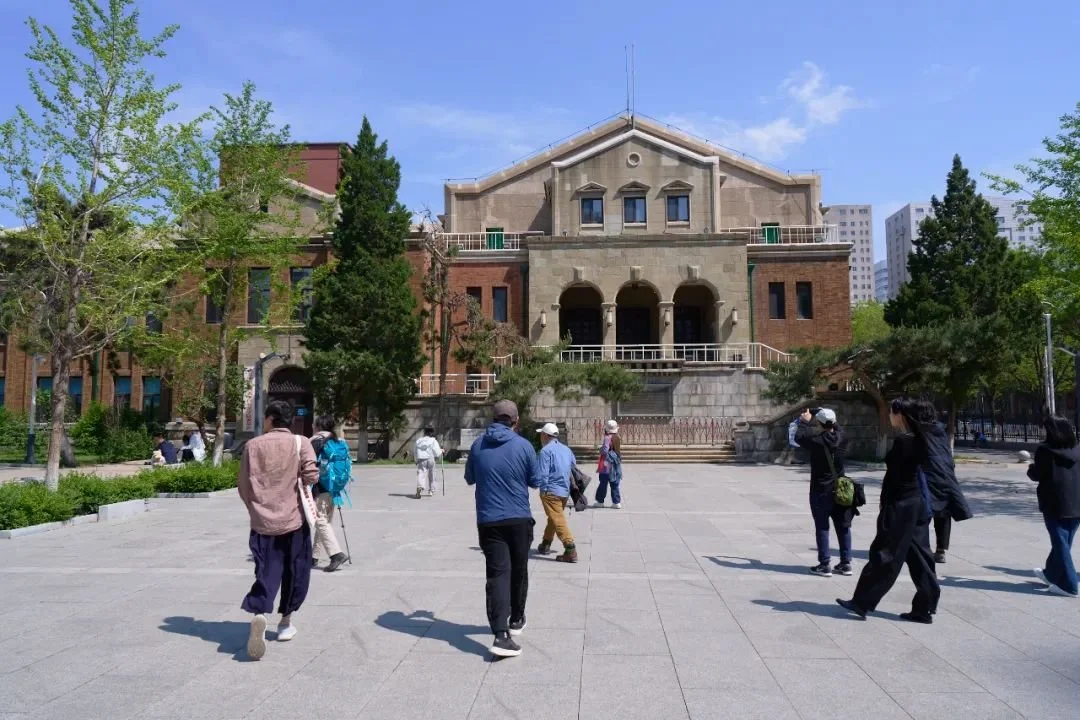
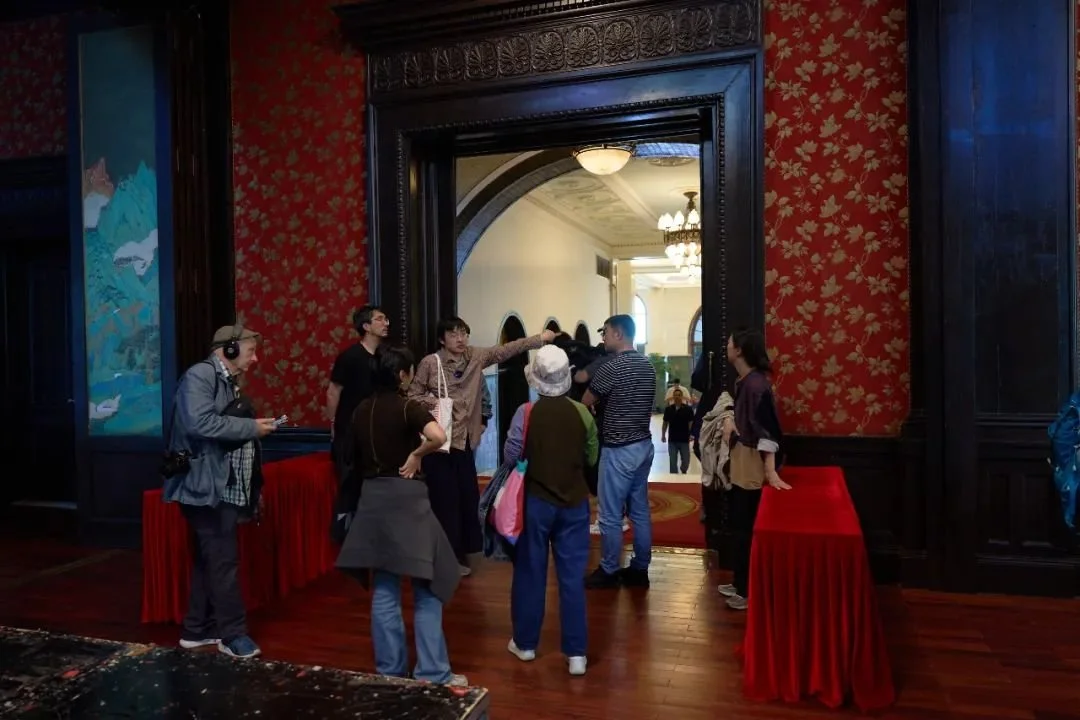
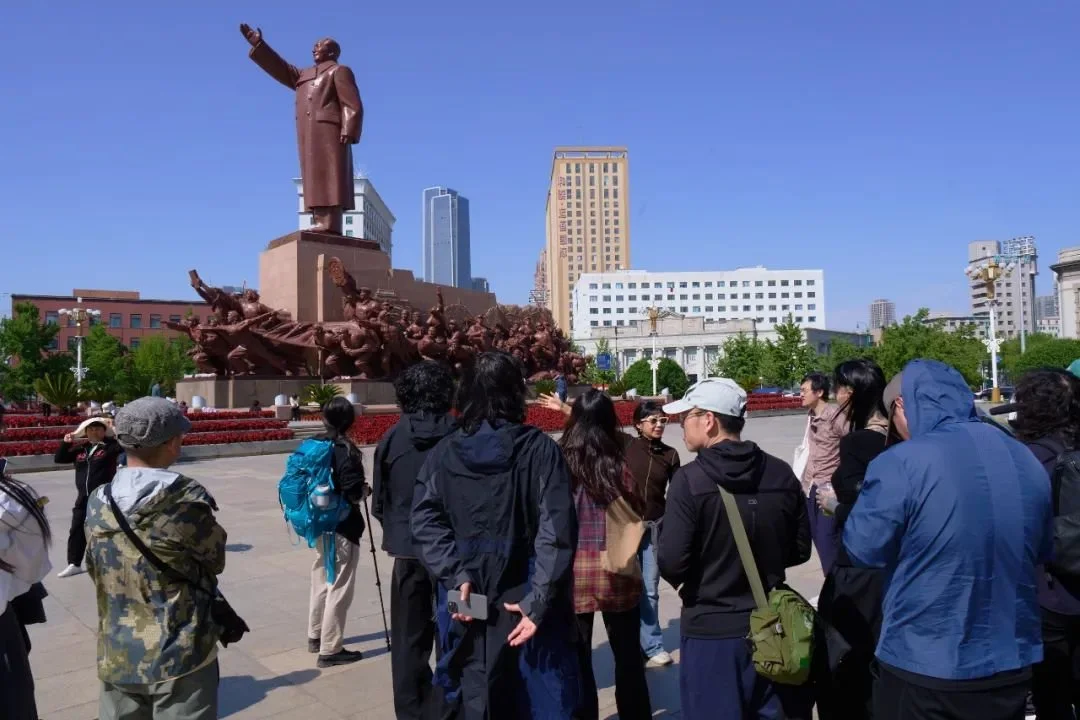


20. Field Trip
Life and Death of Strangers in Xita
Friday, May 15, 2025
Shenyang
Shenyang's Xita neighborhood is the subject of Professor Song Nianshen's new English-language book Space, State, and the Everyday in a Northeast Chinese Neighborhood (University of Chicago Press, 2025). Tracing spatial transformations in Xita from the Qing dynasty to the 1990s, the book maps nearly three centuries of local, national, and Northeast Asian shifts. Named after the nearby Xita Yanshou Temple, the area began as a Tibetan Buddhist site during the Qing. In the early 20th century, it evolved into a capitalist railway hub. During the Japanese occupation, many Koreans were conscripted into Northeast China—some settled in Xita, drawn by Korean Christian missions. Today, it is the largest ethnic Korean enclave in Northeast China outside of Yanbian. Since the 1990s, Xita has grown into a vibrant commercial district known for its Korean food markets, restaurants, and nightlife—offering a rich site for social and anthropological inquiry.
Tucked away in a quiet corner of the neighborhood stands an abandoned bluestone chapel, octagonal in shape with a small cylindrical projection, cross-shaped openings, and a helmet-like bronze-tiled spire. Built in 1912 by the Russian Empire, it was a war memorial chapel for Russian soldiers killed in the Russo-Japanese War. The Japanese referred to it as the “Russian Loyal Spirits Monument.” After 1949, it became part of a Soviet military cemetery, which was relocated in 1995. Since then, the building has served as a storage facility for Shenyang's municipal funeral services. Located near bustling Korean food streets, the lonely chapel offers a stark contrast. The Russian-Japanese War, fought over control of Northeast China, had deep repercussions. Japan's victory over a Western power emboldened its imperial ambitions. Lu Xun's decision to abandon medicine for literature was inspired by a Japanese newsreel showing the execution of a Chinese man accused of spying for Russia. The war also features in Duanmu Hongliang's novel Grasslands of the Khorchin Banner. The Japanese army's postwar medicine, named “Seirogan” (originally “Conquering Russia Pill”), was later renamed for diplomatic reasons and is still sold today. While many war sites in Lüshun have become tourist attractions, this Russian war memorial in Shenyang remains largely forgotten.
21. Field Trip
Journey to the Borderland
Led by Liang Chen
Thursday, May 15, 2025
14:00-17:00 · The Broken Bridge, Aisin-Giro Puyi Palace, Yalu River Art Museum Antung (Dandong)
The Broken Bridge on the Yalu River is a well-known historical site in Dandong, a Chinese city bordering North Korea. Two bridges span the river connecting Dandong and Sinuiju, North Korea, both originally built by the Japanese Governor-General of Korea's Railway Bureau—the lower bridge in 1911 and the upper in 1937. During the Korean War, these bridges served as crucial routes for the Chinese People's Volunteer Army crossing into Korea and were heavily bombed by U.S. air forces. The lower bridge was destroyed in 1951, leaving behind four surviving sections on the Chinese side—now preserved as a war relic and a spot for tourists to glimpse Sinuiju across the river.
Led by Xiaotao from the Dandong historical research group Tiebishanfang, we visited the ruins of the Danish Lutheran-run Danguo Hospital on Yuanshan Hill. Though still bearing a provincial heritage marker, the Nordic-style brick buildings have fallen into disrepair. Founded in 1906 by missionary Soren Anton Ellerbek, the hospital was later repurposed as Dandong Women and Children's Hospital and then the city's Third Hospital. The Danish Lutheran Mission began working in southern Manchuria in 1891 and established six parishes in Dandong, along with hospitals, schools, seminaries, and churches. Missionaries like Johannes Vyff, Karen Gormsen, Ellen Nielsen, and Kaj Johannes Olsen remain fondly remembered by local history enthusiasts.
The so-called “Eastern Palace of Puyi” in Langtou Township has two municipal heritage plaques, but Tiebishanfang researchers have shown that the site was originally a clubhouse built in 1940 by the Manchurian Motor Company, a subsidiary of the Kwantung Army's state-backed Manchukuo Heavy Industry Development Corporation. When Puyi toured Andong in 1943, he stayed at the Japanese consulate—there's no record of him visiting Langtou. After 1949, the site was taken over by an air force unit. In the 1990s, it was converted into a hotel and nightclub dubbed the “Eastern Palace of Puyi,” which popularized the name. Now, the site is a surveillance-fenced ruin. Ironically, its real historical value lies not in imperial legacy but in how post-reform Dandong's entertainment industry reimagined and repackaged Manchukuo history. In that sense, the ambiguous wording on its heritage plaques could be seen as cleverly adaptive.
Our final field visit for Spring on Changbai was the Yalu River Art Museum, guided by Liang Chen. Located on Moon Island in the middle of the Yalu, just 600 meters from North Korea, it is the only contemporary art museum on a national border. Since 2023, it has held only one exhibition per year, requiring a strong, durational relationship between the works and the year-long timeline. The current 2024–2025 show features Wang Luyan, Wang Youshen, Zhao Liang, and Liu Zhan. A concurrent documentary exhibition curated by Liang allows new exhibitions to layer over existing ones, creating a continuously evolving show. Its ethos—embracing disorder, conflict, unfinished displays, a refusal of success/failure metrics, presence in absence, and real-time archiving—makes Yalu River Art Museum a rare site of experimentation in today's art world.
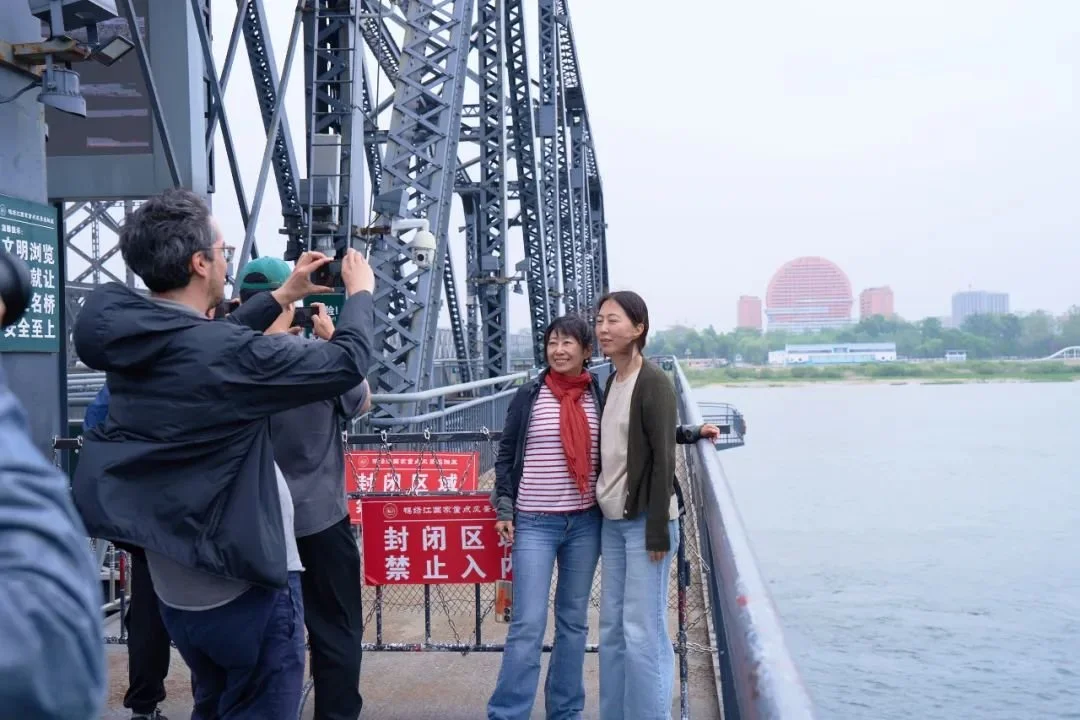



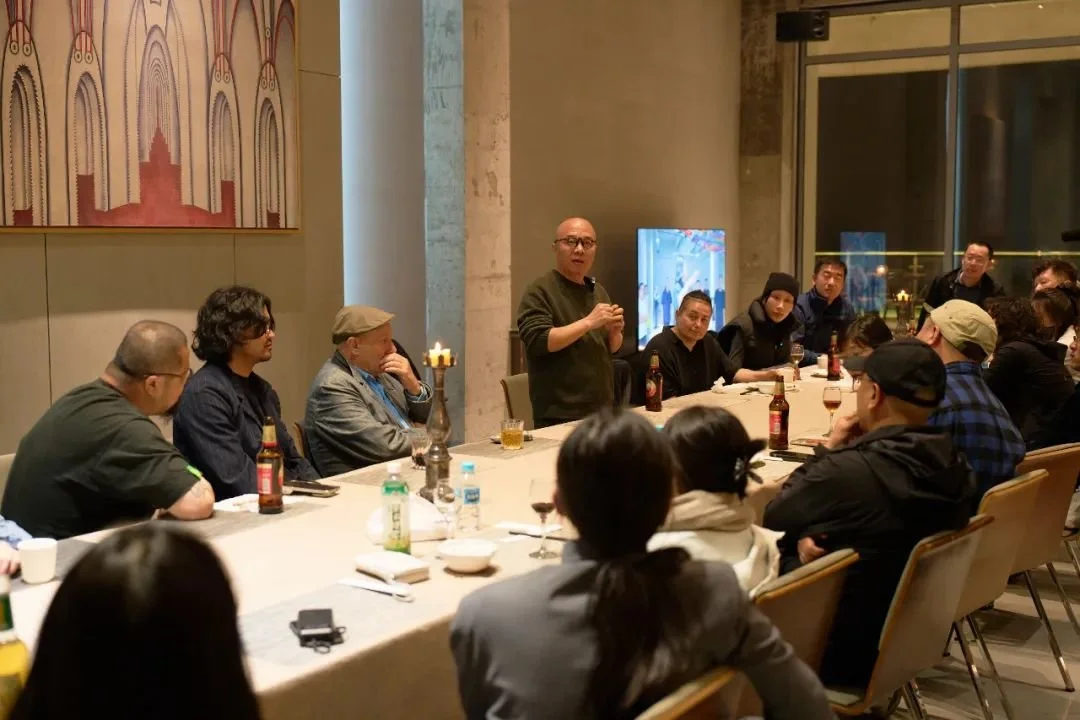
22. Epilogue
The Initial Exploration of Northeast Asia
by Ou Ning
Northeast Asia is a region of immense complexity and richness. Spring on Changbai marks only a modest beginning in our research and residency journey. We cast as wide a net as we could, not knowing what we might gather. In the coming months, we plan to devote more time, invite more collaborators, and gradually narrow our inquiries until something takes shape.
Many among us are newcomers to the region, and we cherished this opportunity to learn together. We made a conscious effort to suspend our prior knowledge and assumptions—to clear space in our minds for new understandings to take root. This was a restart: a de-mapping and re-mapping of thought, a disassembling and reassembling of the self through learning.
Anchored at the Northeast Asia Art Archive in Erdaobaihe, our activities unfolded in two parts: on-site sharing and off-site field research. Field travel offered embodied, direct learning in natural and social environments, while the screenings, performances, exhibitions, discussions, and readings at the residency provided experiential learning through others. For those entering unfamiliar terrain, this combination may be one of the most effective ways to learn.
In studying Northeast Asia, everyone becomes both student and teacher—a practice of co-learning. What emerged was a transnational, multidisciplinary, and continually growing community. We not only learned from one another but also committed to transforming that learning into artistic and intellectual work. Over the next year, the pieces generated from this residency, along with newly commissioned writing, will be compiled into a publication. Meanwhile, the exhibition initiated at the residency will expand and travel to New York for presentation.
The opening of the New York exhibition and release of the book will mark the beginning of the next Spring on Changbai. We look forward to returning to Changbai Mountain in spring 2026!
23. APPENDIX A
Audible Dongbei: 18 Tracks of Field Recording
by Ou Ning
April 4 to May 8, 2025
Yanbian, Changchun, Siping, Shenyang, Dandong, Harbin
Close your eyes and listen: gushing springs, jubilant rivers, forests welcoming back their creatures, a springtime habitat bursting into life. These sounds signal a shift away from extractive development. Logging has ceased, state forest workers have moved to new livelihoods, and ecological protections are now firmly in place—releasing the mountains and forests from human-centered pressure. Northeast China has seen waves of industrialization and deindustrialization. Beyond the remnants of key industries undergoing reinvention, a tidal shift toward cultural tourism now sweeps across the land. Inventive locals have created low-cost automated machines for small workshops and street vendors, their metallic rhythms amplifying the clamor of historic districts and the spiritual economies of rural temples. Across Northeast Asia, people once separated by history and borders still share a common tongue. Though we may not understand their language, it sounds to us like music. Those who fled here from the Korean Peninsula or inland China have, through cycles of dislocation and return, raised descendants who are now the locals. The line between homeland and exile has quietly blurred—perhaps that's why someone in a Changchun public square plays The Beauty of Shanxi on their flute.
Listen on Soundcloud

Northeast Asia Art Archive Library, Erdaobaihe Town, 2025. © Ou Ning
23. APPENDIX B
Selected Bibliography
Henry Evan Murchison James, The Long White Mountain; or, a journey in Manchuria ... with illustrations and a map (British Library, Historical Print Editions, 2011)
Owen Lattimore, Manchuria: Cradle of Conflict (Warren Press, 2007)
Prasenjit Duara, Sovereignty and Authenticity: Manchukuo and the East Asian (Rowman & Littlefield Publishers, 2004)
Rana Mitter, The Manchurian Myth: Nationalism, Resistance, and Collaboration in Modern China (University of California Press, 2000)
Yoshihisa Tak Matsusaka, The Making of Japanese Manchuria, 1904–1932 (Harvard University Asia Center, 2001)
Yukiko Koga, Inheritance of Loss: China, Japan, and the Political Economy of Redemption after Empire (University of Chicago Press, 2016)
Bruce Elleman and Stephen Kotkin, Manchurian Railways and the Opening of China: An International History (Routledge, 2010)
Evelyn S. Rawski, Early Modern China and Northeast Asia: Cross-Border Perspectives (Cambridge University Press, 2015)
Thomas David DuBois, Empire and the Meaning of Religion in Northeast Asia: Manchuria 1900–1945 (Cambridge University Press, 2016)
Norman Smith, Intoxicating Manchuria: Alcohol, Opium, and Culture in China's Northeast (University of Washington Press, 2013)
Louise Young, Japan's Total Empire: Manchuria and the Culture of Wartime (University of California Press, 1997)
Bill Sewell, Constructing Empire: The Japanese in Changchun, 1905–45 (UBC Press, 2019)
Edward Denison and Guangyu Ren, Ultra-Modernism: Architecture and Modernity in Manchuria (Hong Kong University Press, 2017)
Yuxin Ma, Colonial Tactics and Everyday Life: Workers of the Manchuria Film Association (University of Wisconsin Press, 2023)
Suk-Jung Han, Manchurian Modern: The Origin of the 1960s Korean Developmental Regime (Lexington Books, 2024)
Dongyoun Hwang, Anarchism in Korea: Independence, Transnationalism, and the Question of National Development, 1919–1984 (State University of New York Press, 2016)
Hyun Ok Park, Two Dreams in One Bed: Empire, Social Life, and the Origins of the North Korean Revolution in Manchuria (Duke University Press Books, 2005)
Jeongwon Bourdais Park, Identity, Policy, and Prosperity: Border Nationality of the Korean Diaspora and Regional Development in Northeast China (Palgrave Macmillan, 2017)
Nianshen Song, Making Borders in Modern East Asia: The Tumen River Demarcation, 1881–1919 (Cambridge University Press, 2018)
Nianshen Song, The Neighborhood: Space, State, and Daily Life in a Manchurian City (University of Chicago Press, 2025)
Michael Meyer, In Manchuria: A Village Called Wasteland and the Transformation of Rural China (Bloomsbury Press, 2015)
Granta 169: China, 2024
The Paris Review, Issue 251, Spring 2025
Read more >>
Henry Evan Murchison James, The Long White Mountain; or, a journey in Manchuria ... with illustrations and a map (British Library, Historical Print Editions, 2011)
Owen Lattimore, Manchuria: Cradle of Conflict (Warren Press, 2007)
Prasenjit Duara, Sovereignty and Authenticity: Manchukuo and the East Asian (Rowman & Littlefield Publishers, 2004)
Rana Mitter, The Manchurian Myth: Nationalism, Resistance, and Collaboration in Modern China (University of California Press, 2000)
Yoshihisa Tak Matsusaka, The Making of Japanese Manchuria, 1904–1932 (Harvard University Asia Center, 2001)
Yukiko Koga, Inheritance of Loss: China, Japan, and the Political Economy of Redemption after Empire (University of Chicago Press, 2016)
Bruce Elleman and Stephen Kotkin, Manchurian Railways and the Opening of China: An International History (Routledge, 2010)
Evelyn S. Rawski, Early Modern China and Northeast Asia: Cross-Border Perspectives (Cambridge University Press, 2015)
Thomas David DuBois, Empire and the Meaning of Religion in Northeast Asia: Manchuria 1900–1945 (Cambridge University Press, 2016)
Norman Smith, Intoxicating Manchuria: Alcohol, Opium, and Culture in China's Northeast (University of Washington Press, 2013)
Louise Young, Japan's Total Empire: Manchuria and the Culture of Wartime (University of California Press, 1997)
Bill Sewell, Constructing Empire: The Japanese in Changchun, 1905–45 (UBC Press, 2019)
Edward Denison and Guangyu Ren, Ultra-Modernism: Architecture and Modernity in Manchuria (Hong Kong University Press, 2017)
Yuxin Ma, Colonial Tactics and Everyday Life: Workers of the Manchuria Film Association (University of Wisconsin Press, 2023)
Suk-Jung Han, Manchurian Modern: The Origin of the 1960s Korean Developmental Regime (Lexington Books, 2024)
Dongyoun Hwang, Anarchism in Korea: Independence, Transnationalism, and the Question of National Development, 1919–1984 (State University of New York Press, 2016)
Hyun Ok Park, Two Dreams in One Bed: Empire, Social Life, and the Origins of the North Korean Revolution in Manchuria (Duke University Press Books, 2005)
Jeongwon Bourdais Park, Identity, Policy, and Prosperity: Border Nationality of the Korean Diaspora and Regional Development in Northeast China (Palgrave Macmillan, 2017)
Nianshen Song, Making Borders in Modern East Asia: The Tumen River Demarcation, 1881–1919 (Cambridge University Press, 2018)
Nianshen Song, The Neighborhood: Space, State, and Daily Life in a Manchurian City (University of Chicago Press, 2025)
Michael Meyer, In Manchuria: A Village Called Wasteland and the Transformation of Rural China (Bloomsbury Press, 2015)
Granta 169: China, 2024
The Paris Review, Issue 251, Spring 2025
All documentary images in this article, unless otherwise noted, were photographed by ASTUDIO team members Yang Lei and Lü Weikang. Copyright belongs to the Northeast Asia Art Archive.



